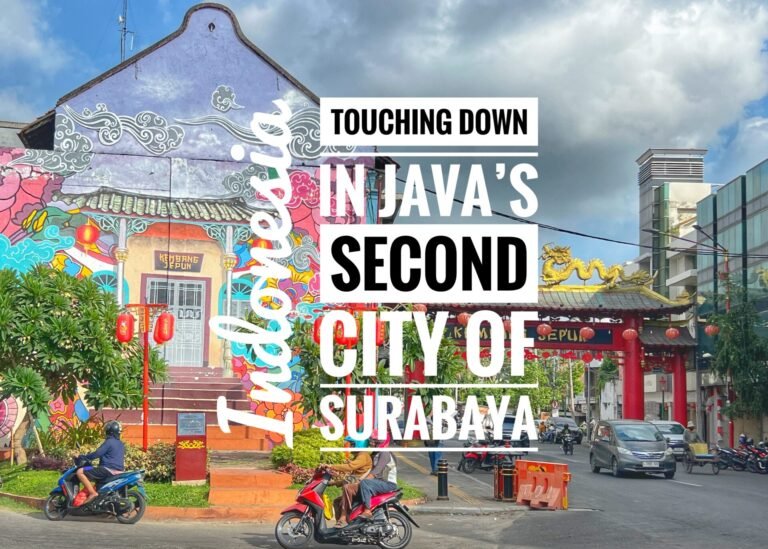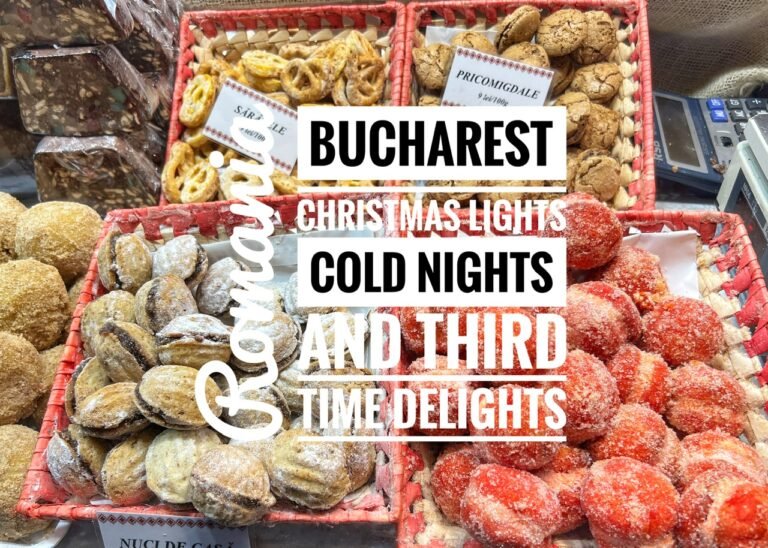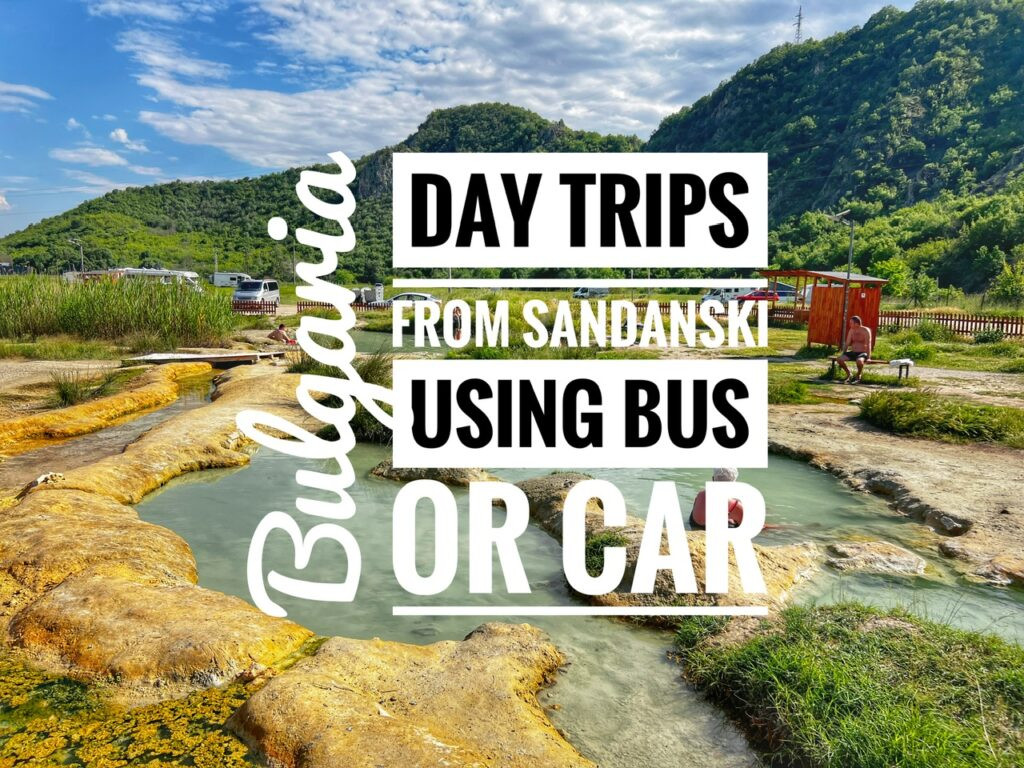
The Far Southwest: Greek and North Macedonian Border Villages
Our first day trip from Sandanski took us around an hour southwest of the city where we would collide with Greece and North Macedonia, weave in and out of more than a dozen modest villages, bear witness to dazzling carpets of ruby red poppies, and climb to a significant medieval stronghold built by Tsar Samuil of Bulgaria in the late 10th century.
We began the day by renting a car at Motel Eros, which seemed to be the only shop in Sandanski to do so, and cost about 50 Leva or $28. The gas to fill up the car was over $5/gallon as is typical in Europe. In theory, we could have visited every single one of these remote villages by public transit, but that would take a lot longer to do so and given us far less freedom.
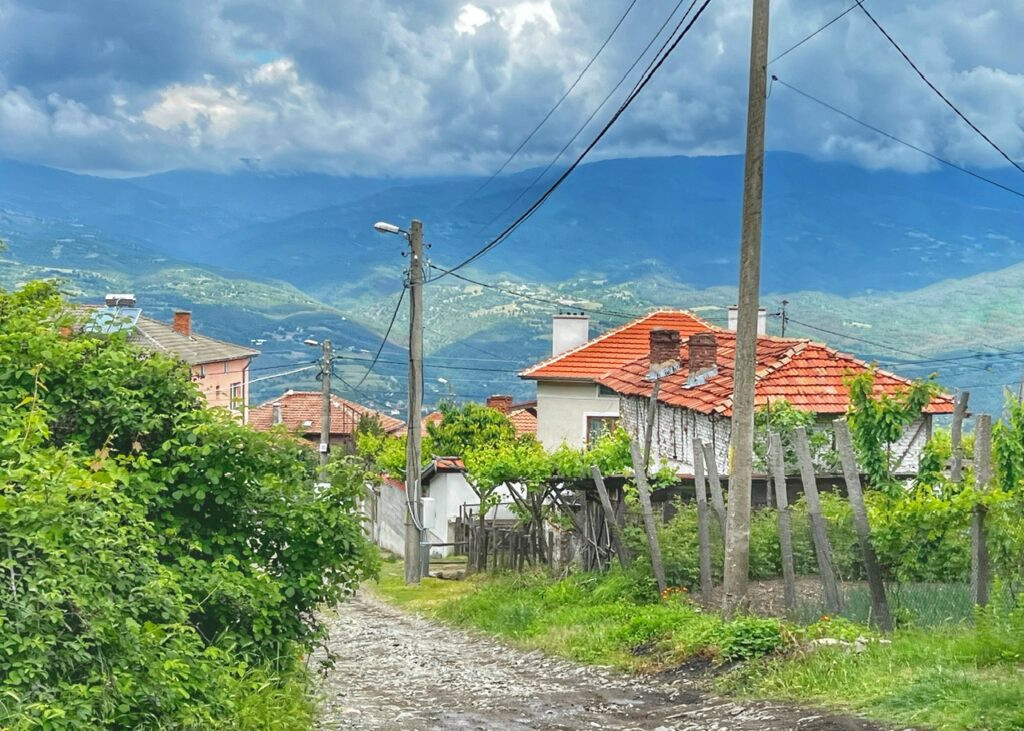
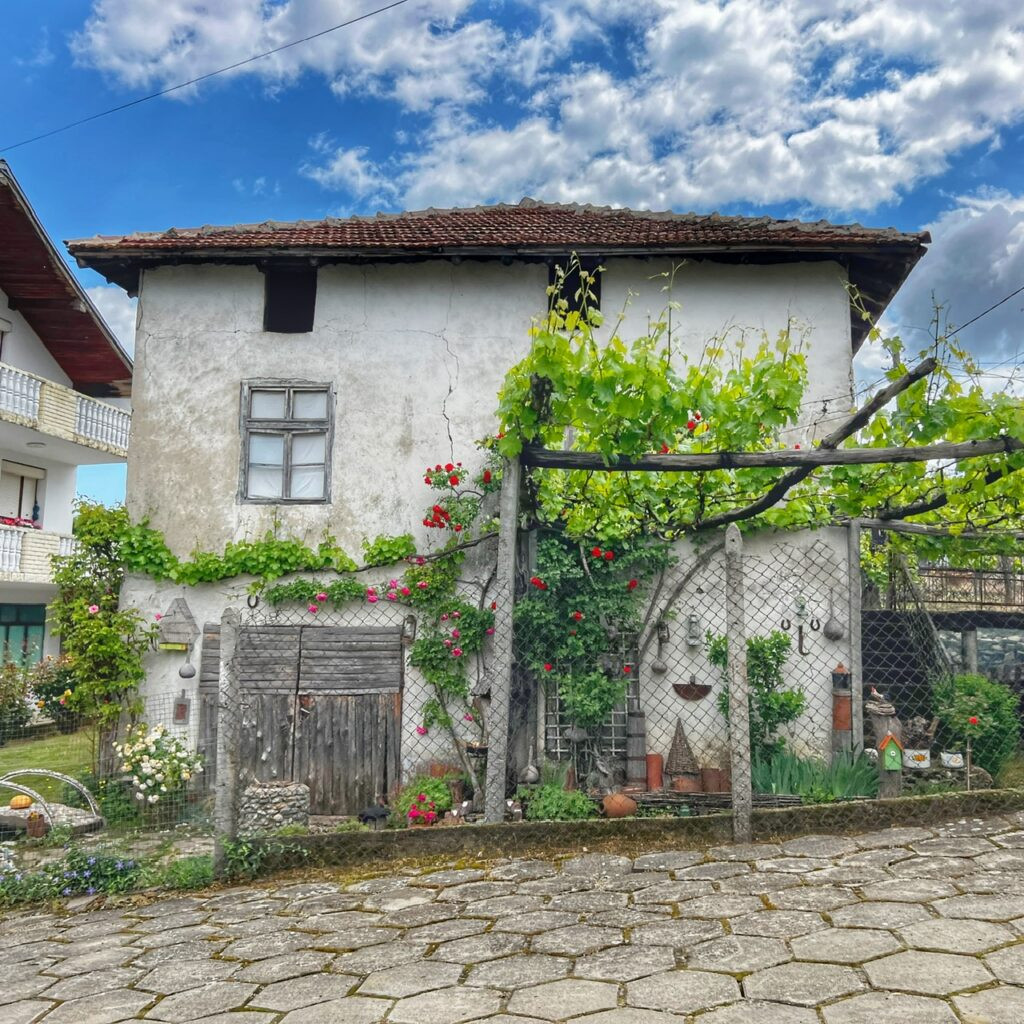
The route would take us to many villages like this one, alongside the Belasitsa Mountains which is the trail-scattered range that divides SW Bulgaria with Greece and North Macedonia. Also, a typical Bulgarian home. Roses, the pride and joy of the country, are prominently featured in some way on many of them. We especially loved how this rose trellis knitted together poetically with this grape vine, another staple in this part of Bulgaria.

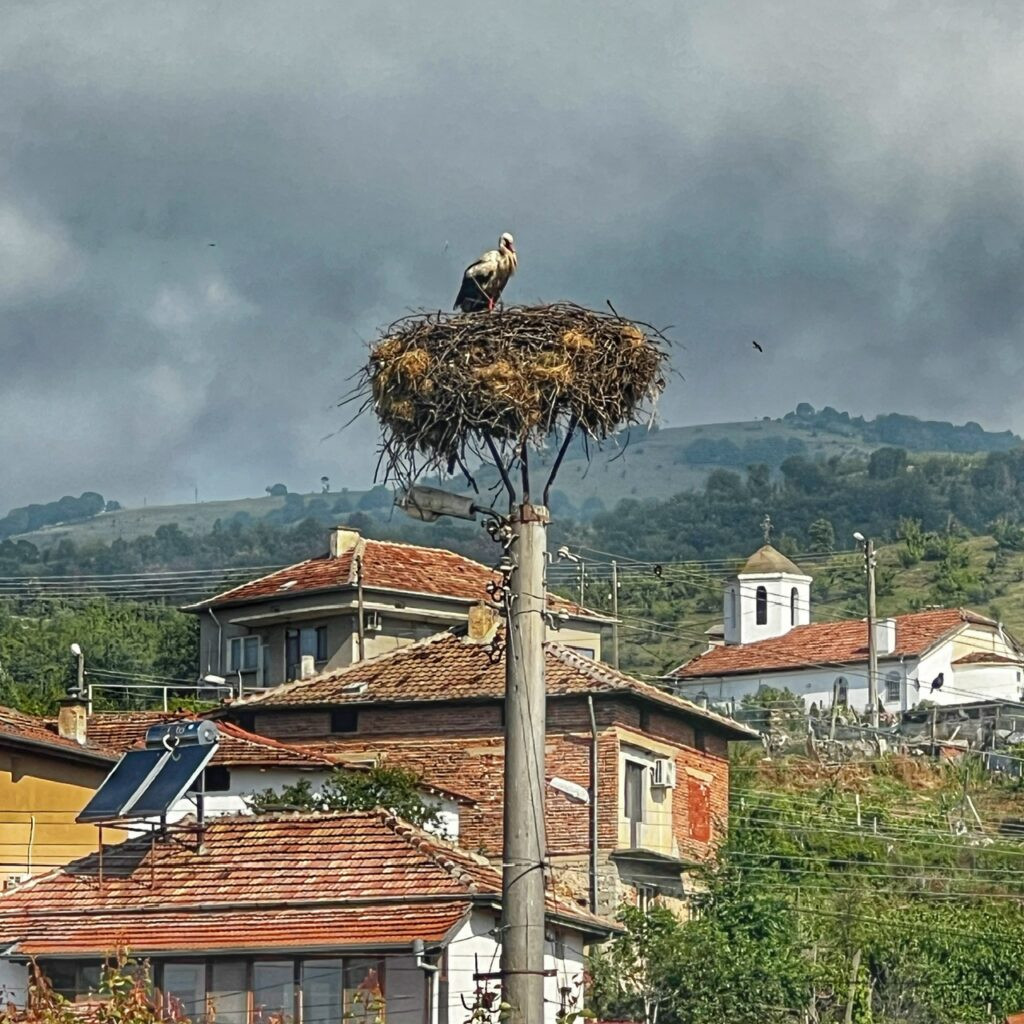
There must be no shortage of babies here either* because another thing you’ll almost definitely discover is colossal stork nests balancing precariously atop the electric poles. In Kavrakirovo, we were amazed to see three in perfect alignment all tending to their storklets inside.
*In reality, unfortunately the death numbers far exceed the births in Bulgaria these days.


And poppies. Sooo many poppies. It’s difficult not to look at this image and hear the Wicked Witch of the West’s voice cackling the word “poppies” as her flying monkey soars overhead.
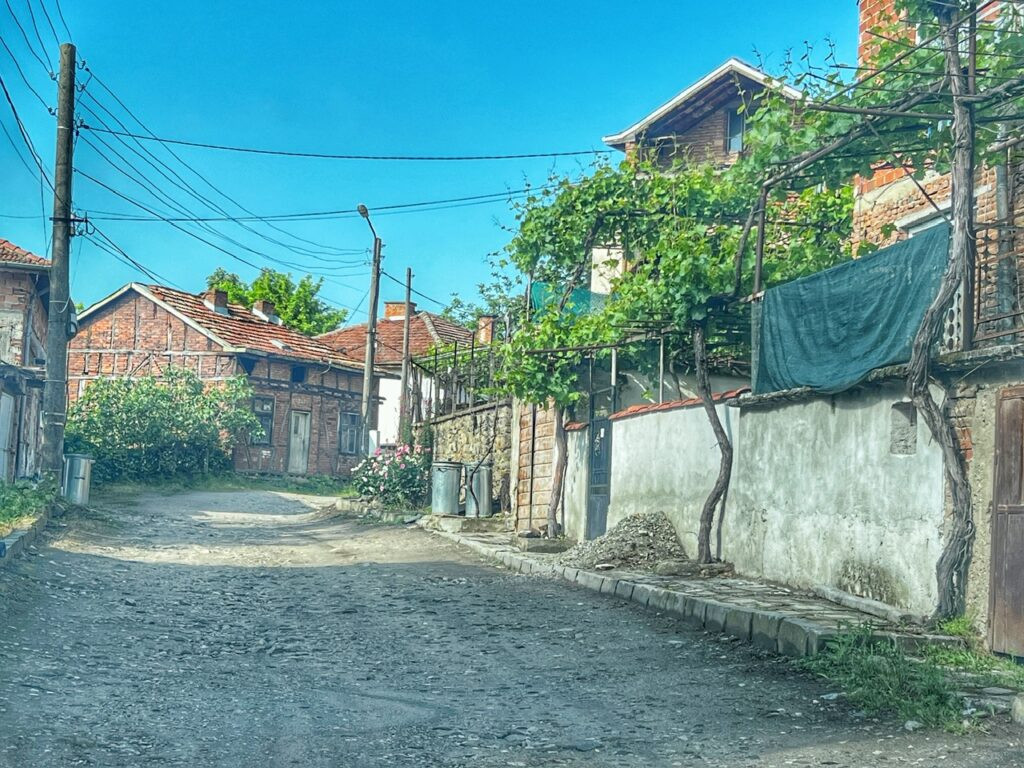
Kurnalovo. In almost every village the locals would look at us curiously obviously wondering who we are and why we were plodding along their potholed and cobbled roads. We got out in several, and often waved and said Zdraveite when met with this stare, which were met with surprised, yet guarded smiles.
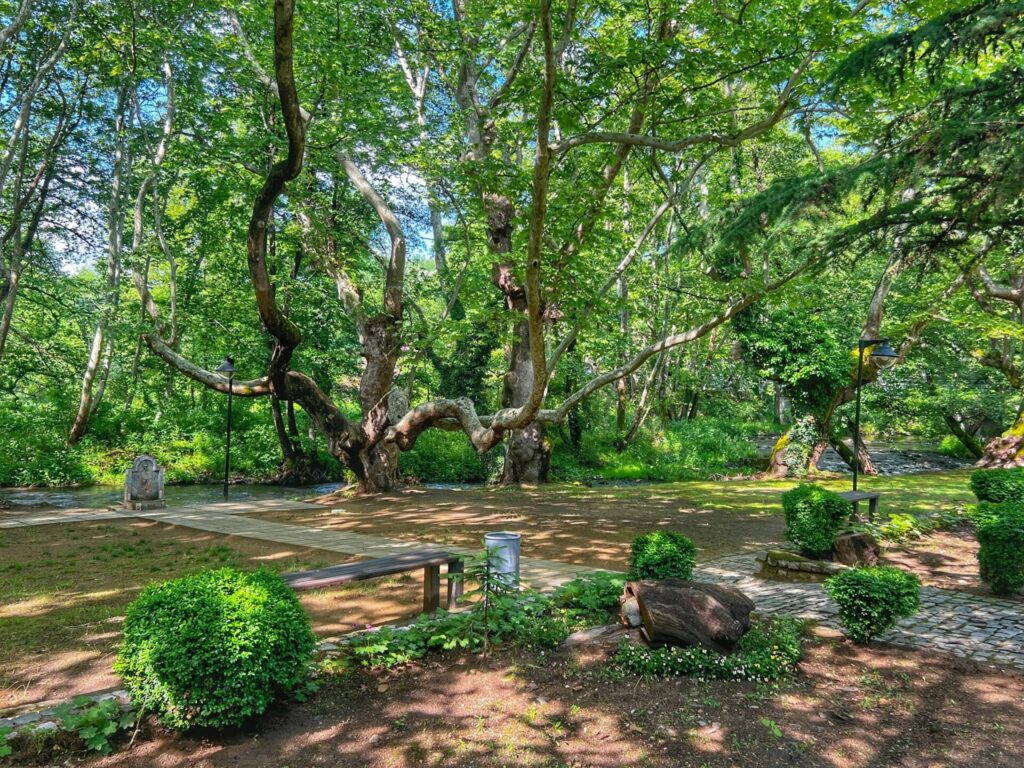
Almost near the border of North Macedonia on road 198, you can find a now symbolic and beautiful site called Samuil’s Fortress, ($3.40) which guarded the narrow mountain passes and was part of a defensive line protecting the Bulgarian Empire’s western front from the Byzantine Empire, especially Emperor Basil Part 2.
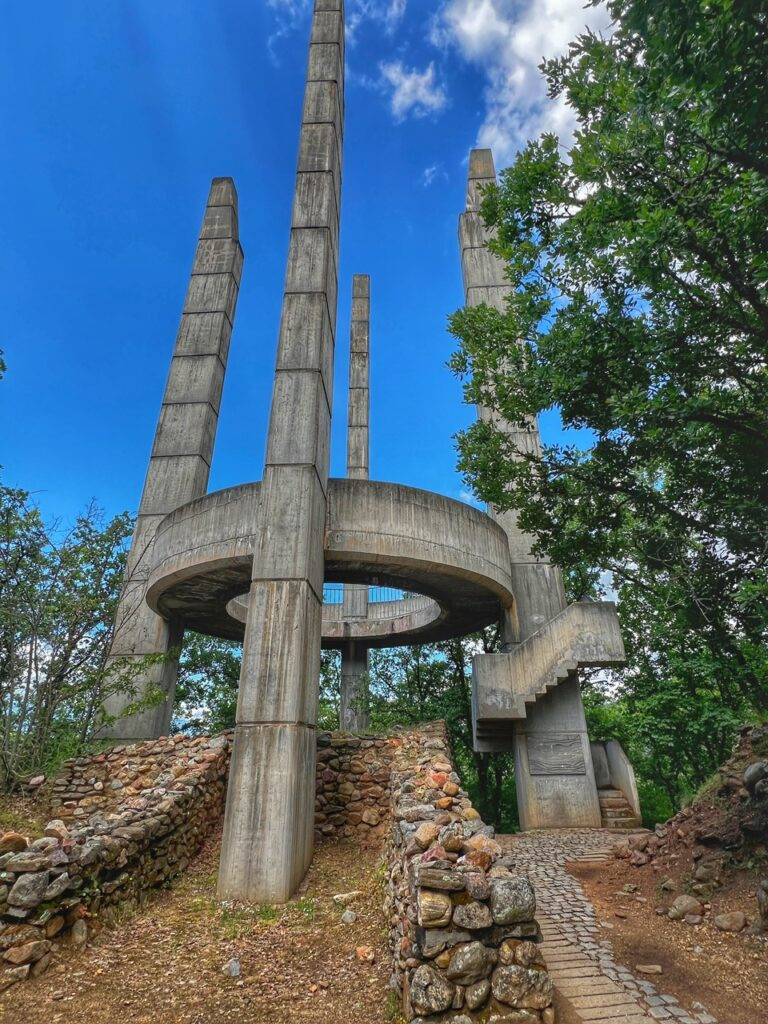
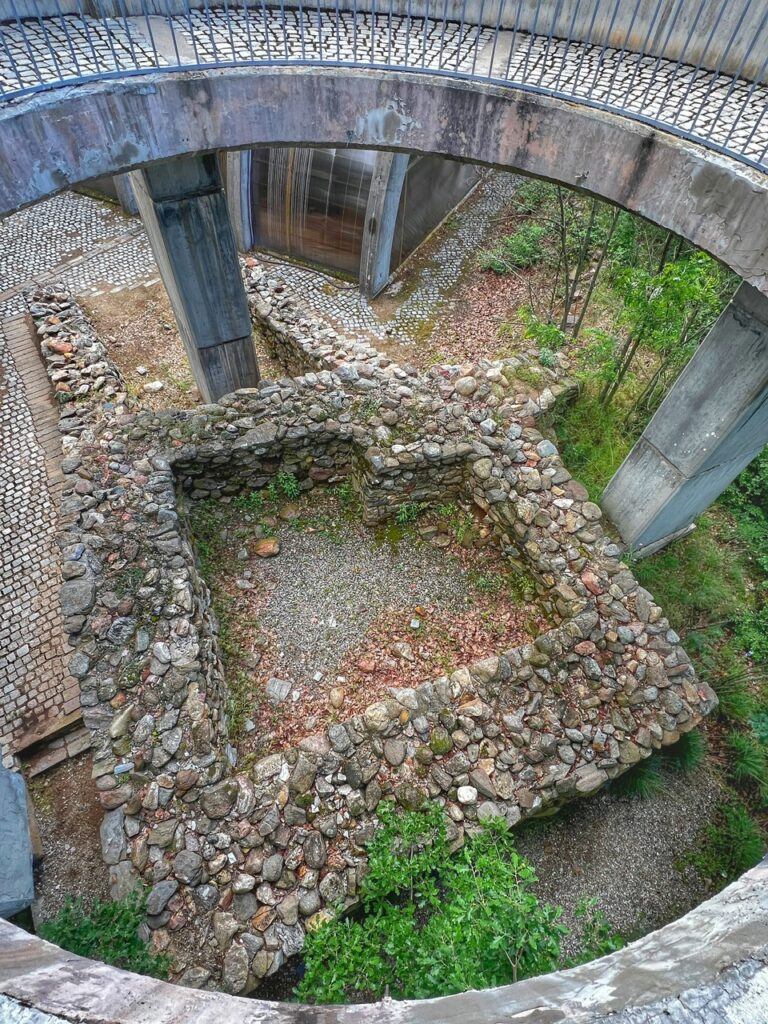
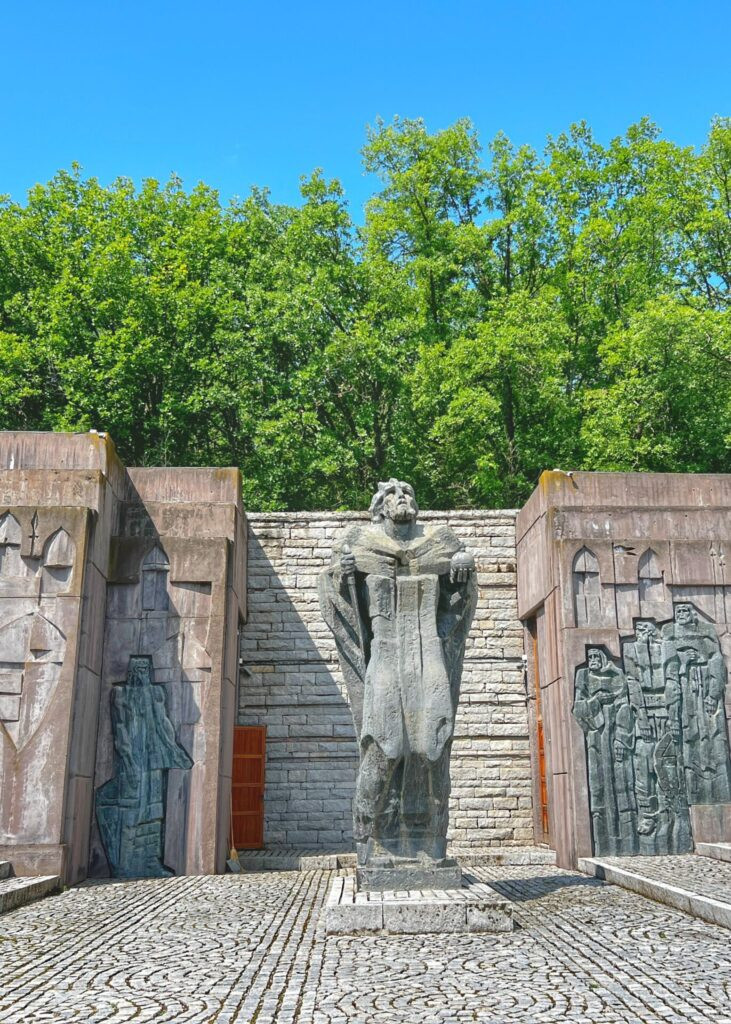
It’s also where the historic Battle of Kleidiontook place between the Bulgarian and the Byzantine armies in 1014 which determined the end of the First Bulgarian Kingdom. After this battle, Basil II captured and ripped out the eyeballs from thousands of Bulgarian soldiers and made them walk back, stumbling through the mountains in a helpless line. This earned Basil II the grim title “Bulgar-Slayer.” Cheery!!
Not really sure what the four pillars stand for, but inside is what we believe is the remnants from the destroyed watchtower. Also, we found Mr. Samuil himself. Let’s give him two thumbs up for trying his damndest!
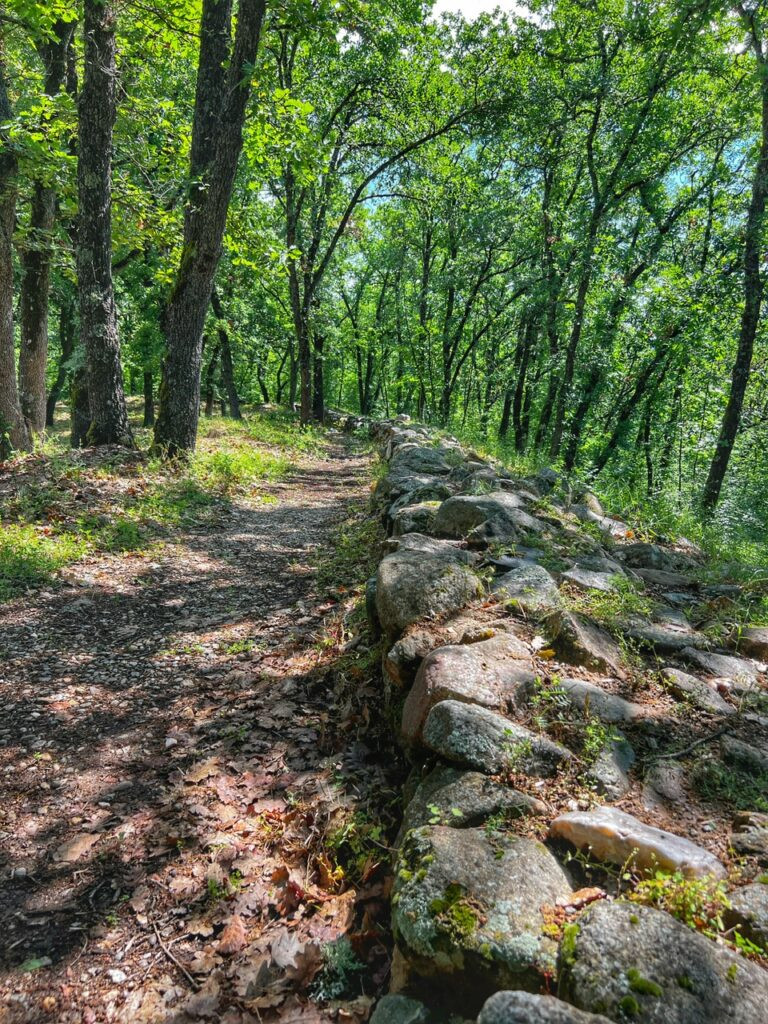

At least they had some nice hiking trails to spend their final days… Also, we traded Bulg-lish chit chat with Kristina, the museum’s receptionist who certainly spoke more English than Mandy’s Bulgarian. The adorable single mom of two daughters, one named after a Russian princess, lives in one of the small villages nearby which she moved to from the “big” city of Petrich. She loves gardening and photography.
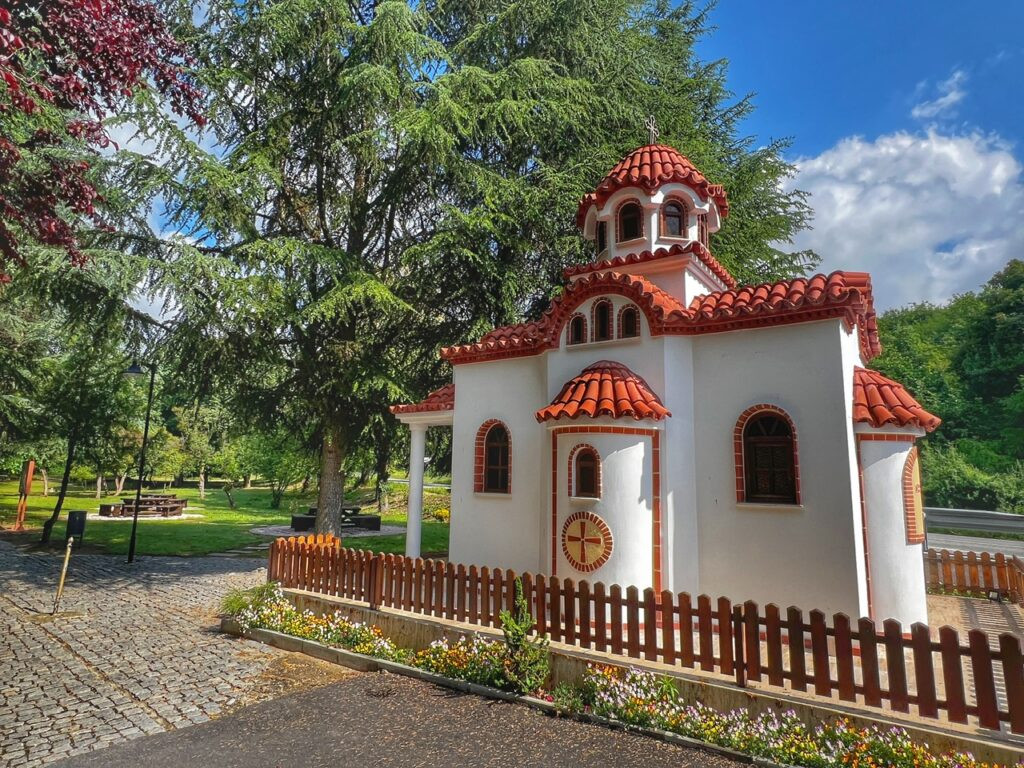
A mini church on the outside of the fortress. Not really sure what this was for other than cute appeal.
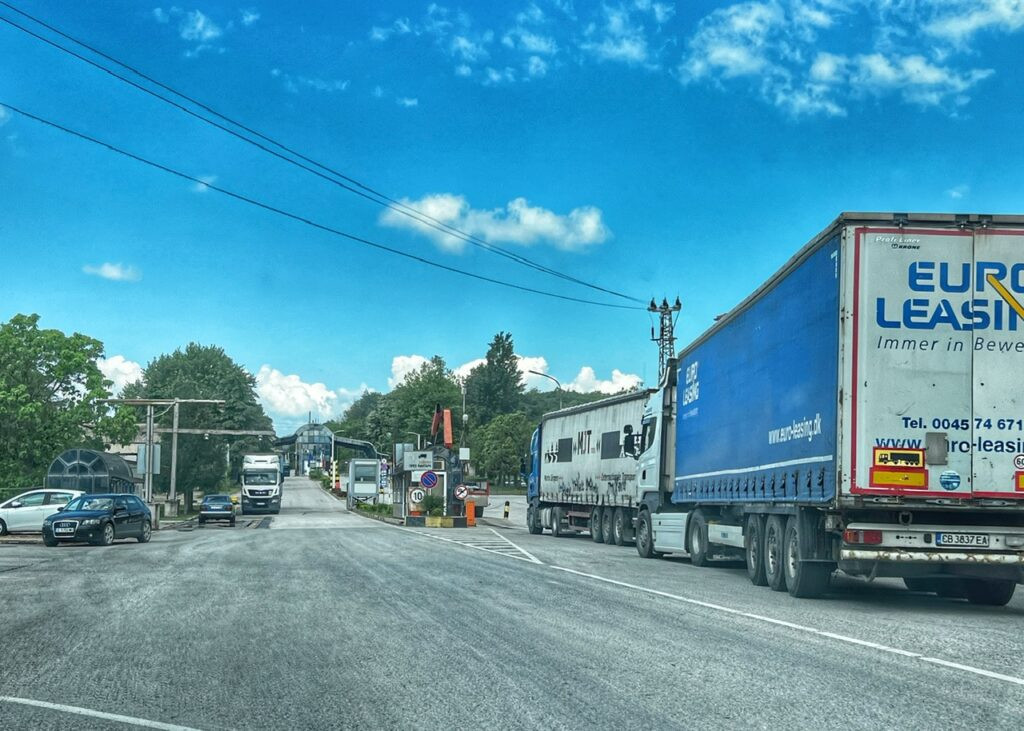
The border of North Macedonia. I believe this is the only time we’ve been this close to a border and didn’t have the urge to cross. 🤣 If you’re interested in our travels from this country, you can check out our 2019 archives. We plan to go back but not now.
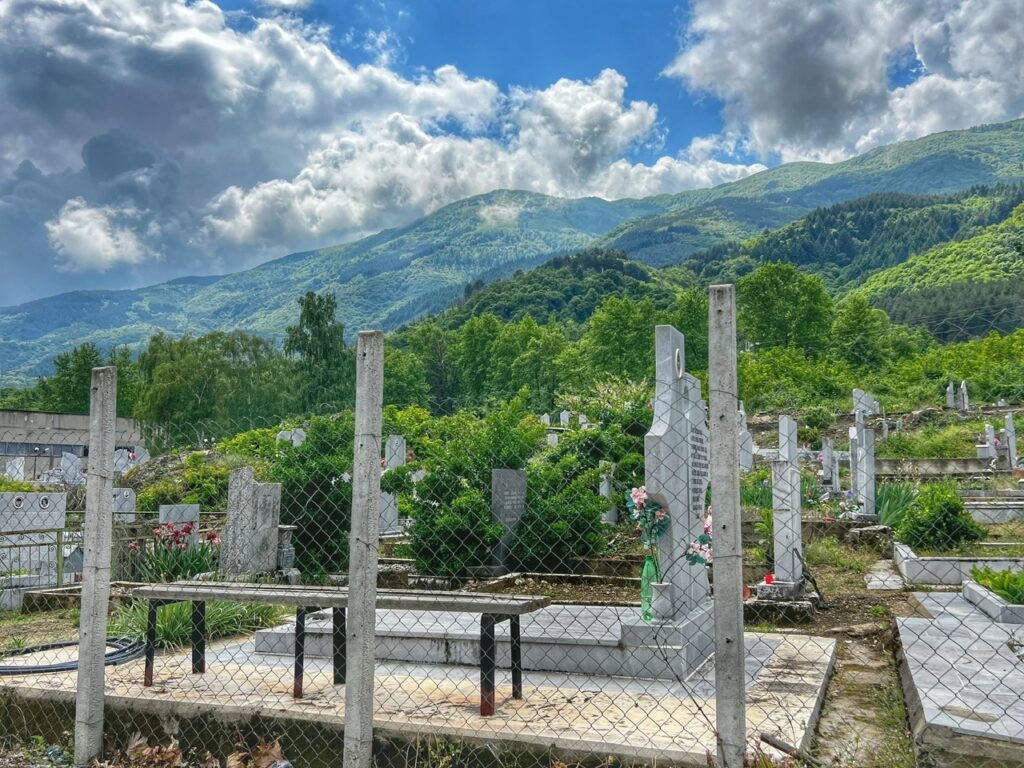
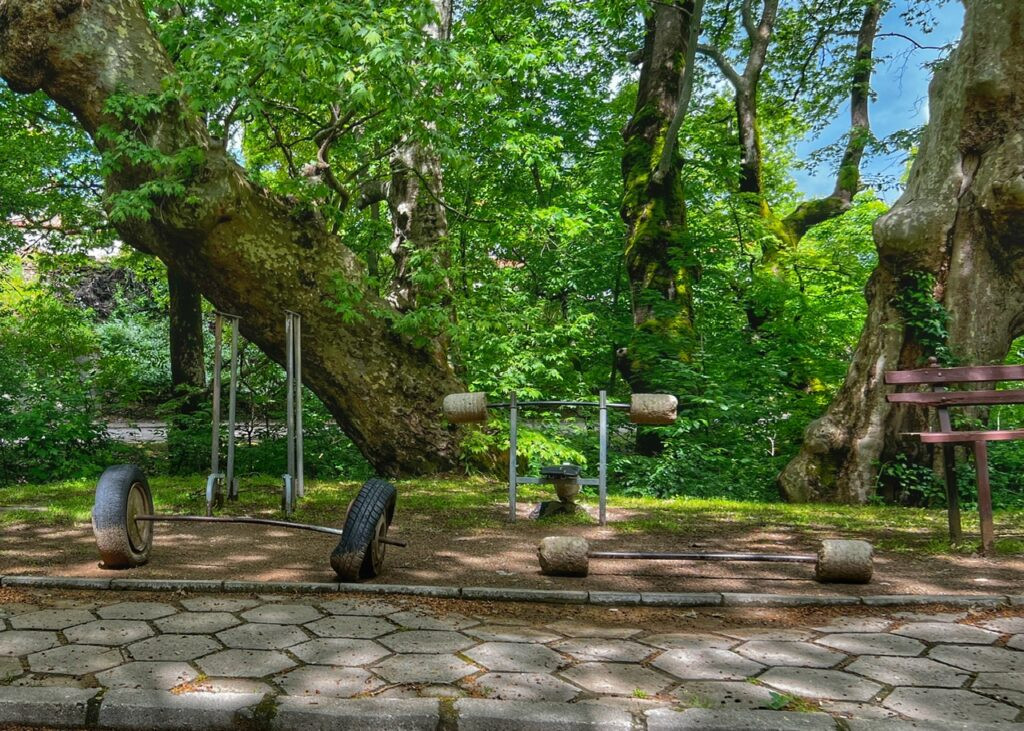
Yay! The sun came out and there’s….Greece! Turns out we’re here during the rainiest month of the year. That said, in a place that is the sunniest in all of Bulgaria, that still means we get ample sunshine! Also, 24 Hour Fitness: Bulgarian Village Edition
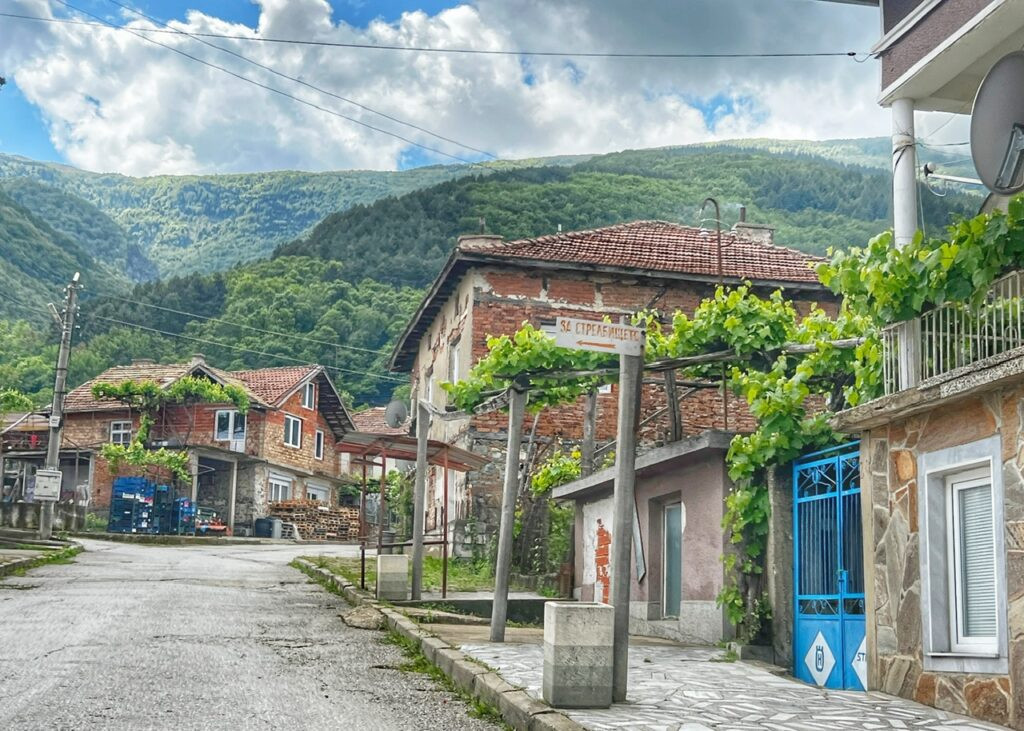
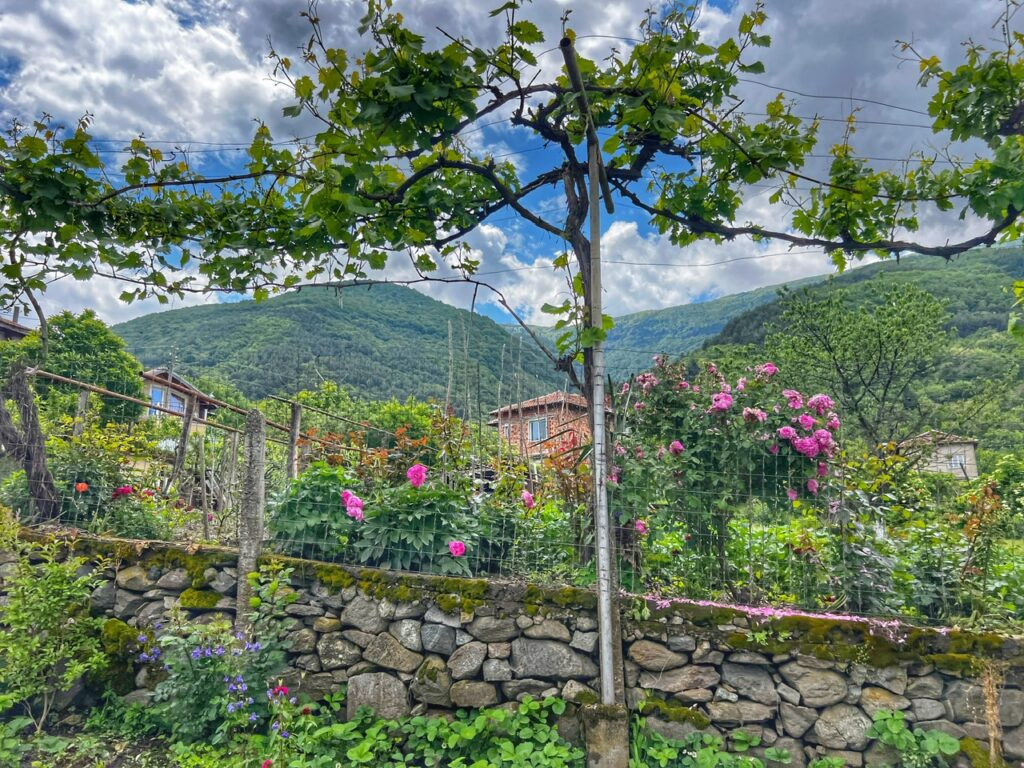
Yarvotnitsa…quite a bit more charming tucked within the mountains, including lots more (rose covered) stone walls.
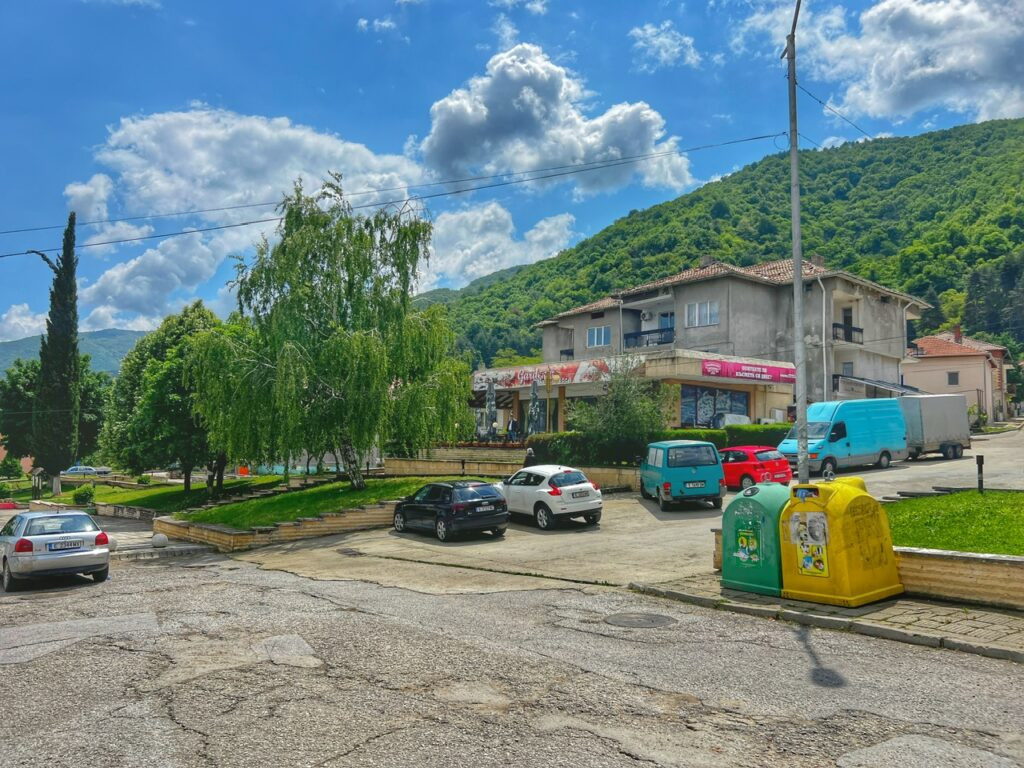
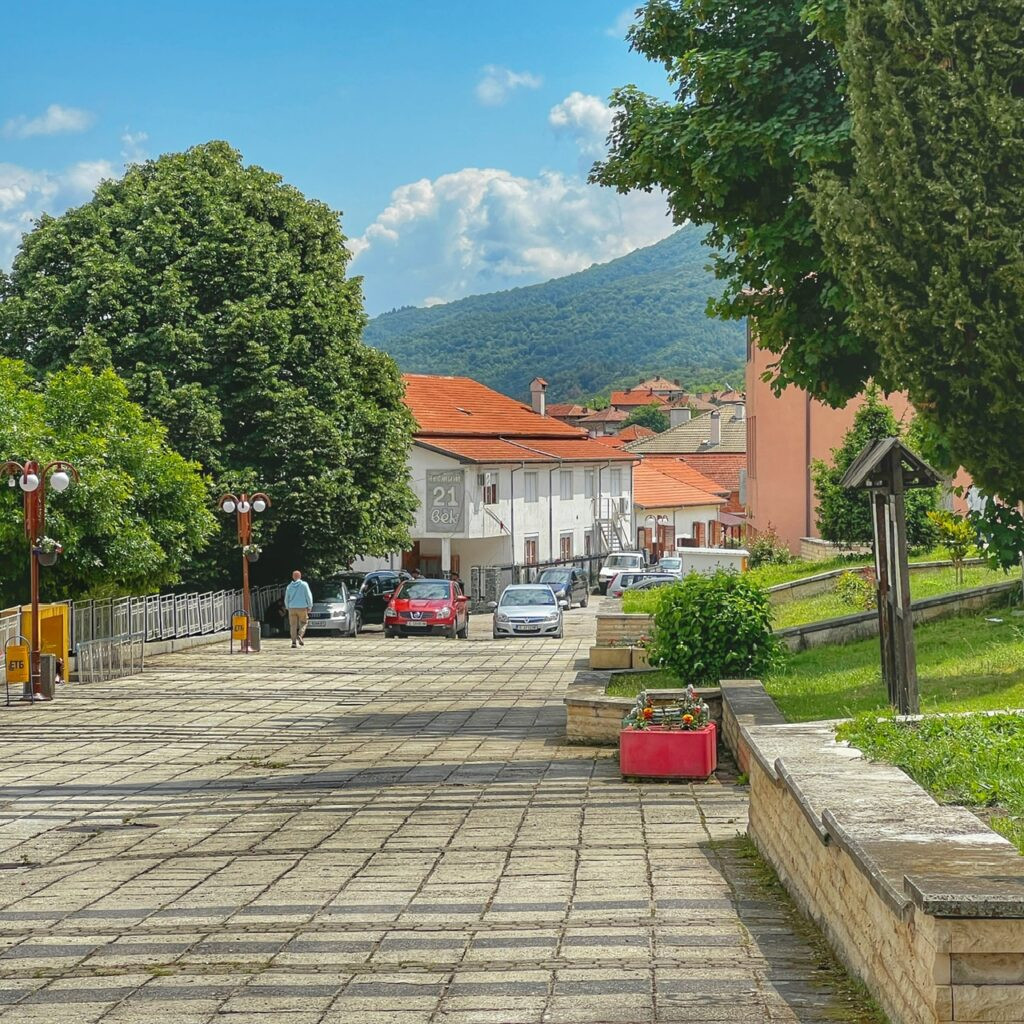
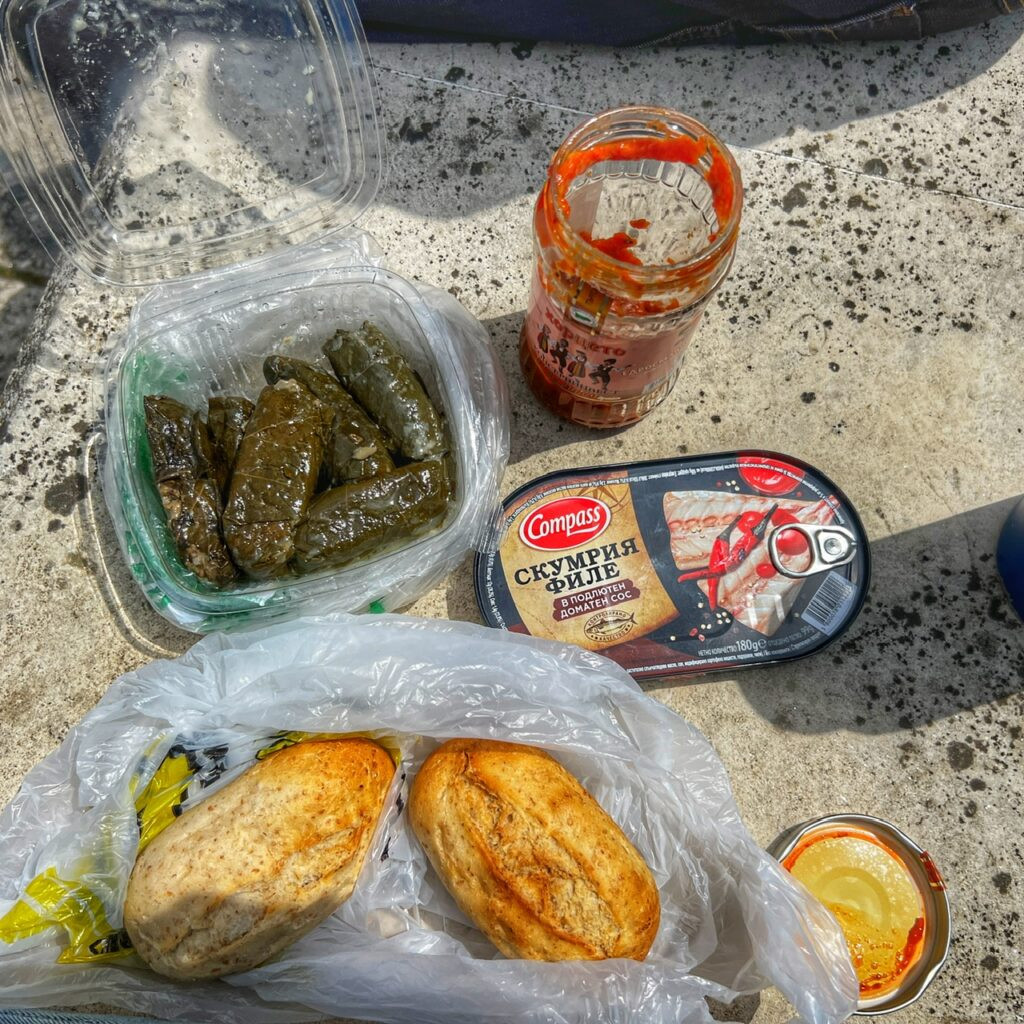
The pizza shop in Kolarovo didn’t look open yet, so it was fortunate we had our own sustenance, as we plopped down near the squarish-like formation which resembled a community gathering place, but was more like a blocked-up rectangle. This is where we had our beloved Bulgarian pack lunch which was canned fish, stuffed grape leaves and bread rolls with Apetika sauce which is more tomato based than the red pepper ajvar (still our favorite!)
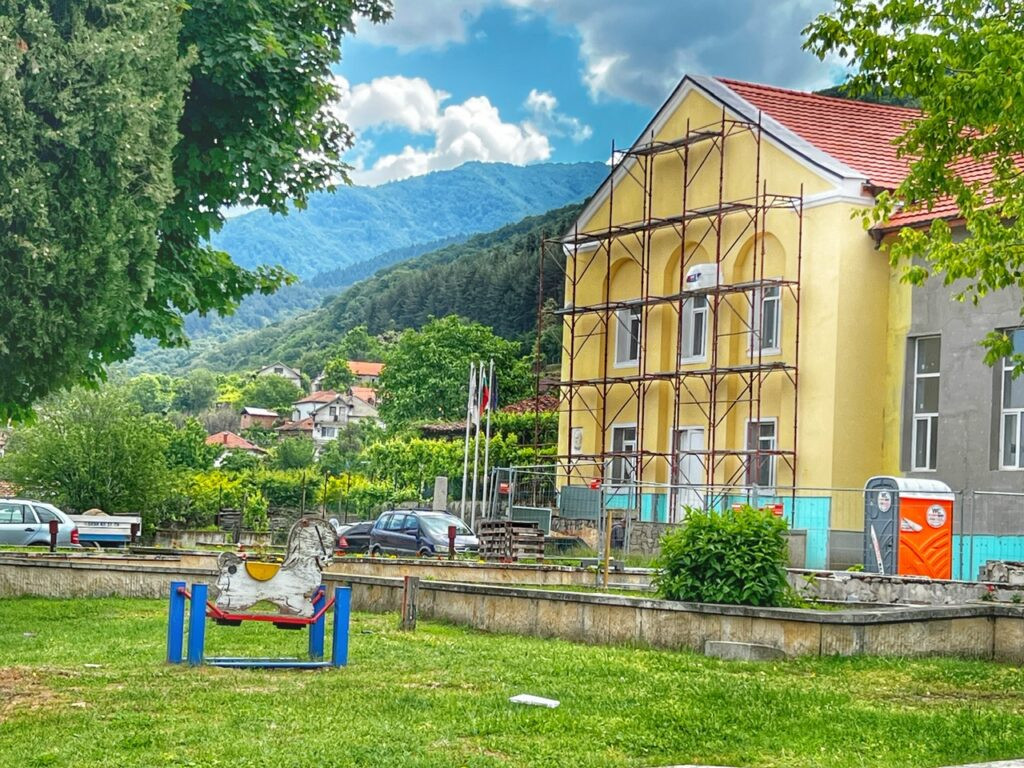
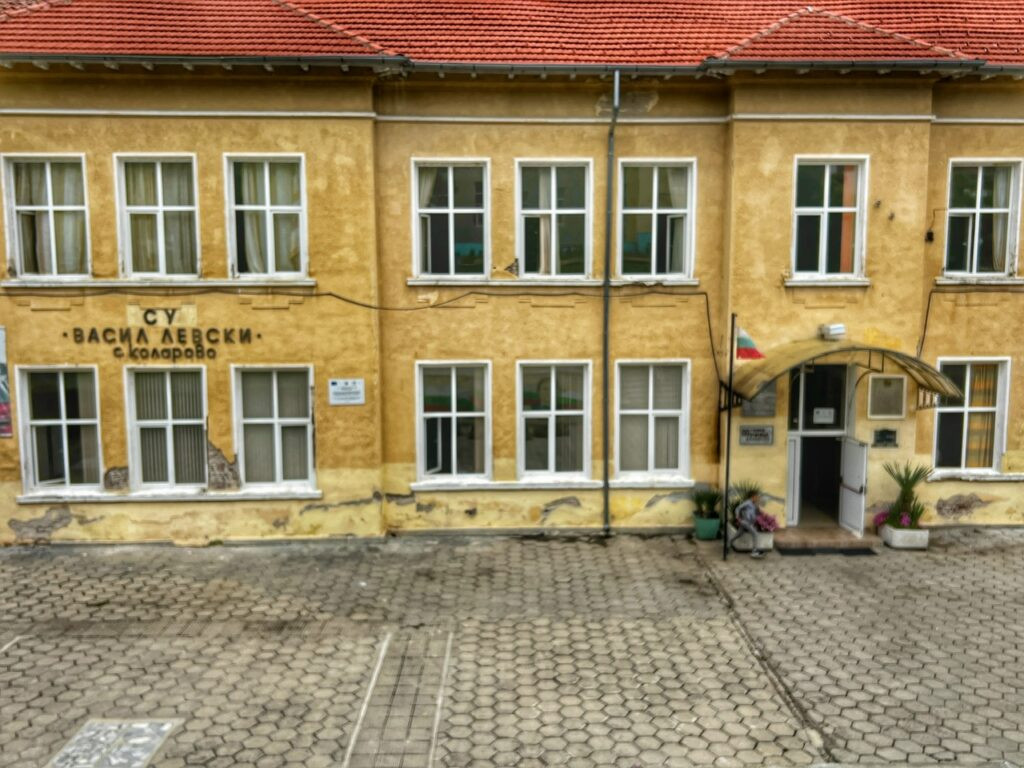
The Town Hall, which appeared to be getting a makeover. The pony horse in front of it…not so much. Also, the village school where we witnessed a kid wishfully trying to escape out of the unscreened windows. He disappeared as Mandy raised her camera, clearly having gotten scolded to sit down and stop staring at the foreigners.
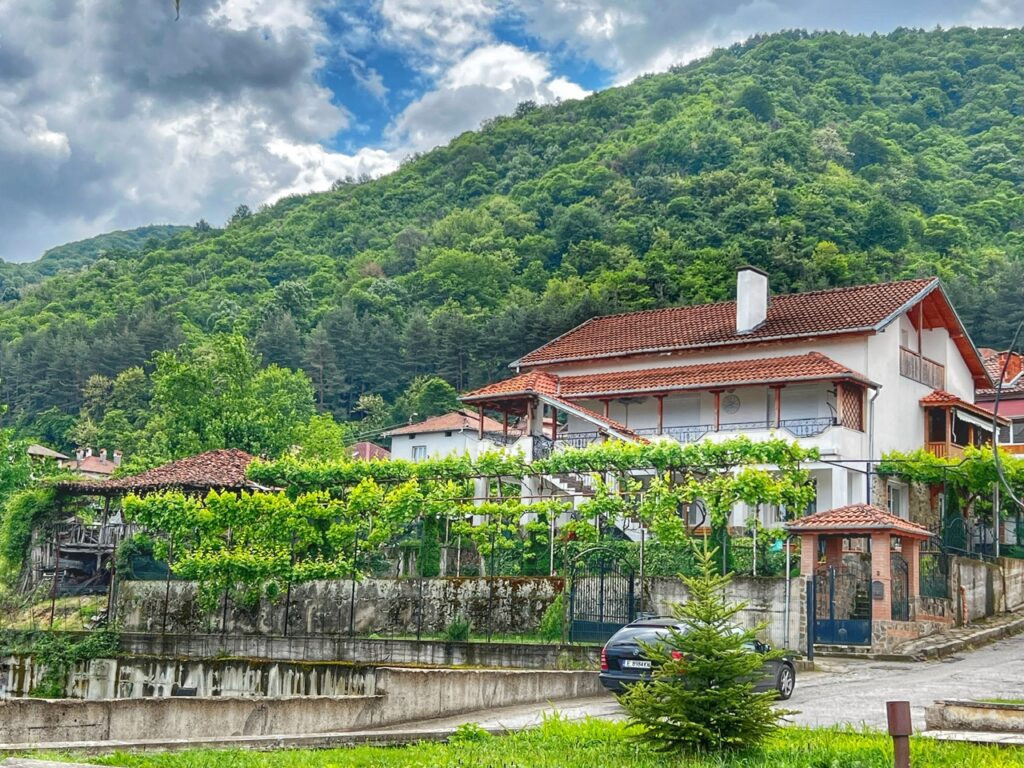
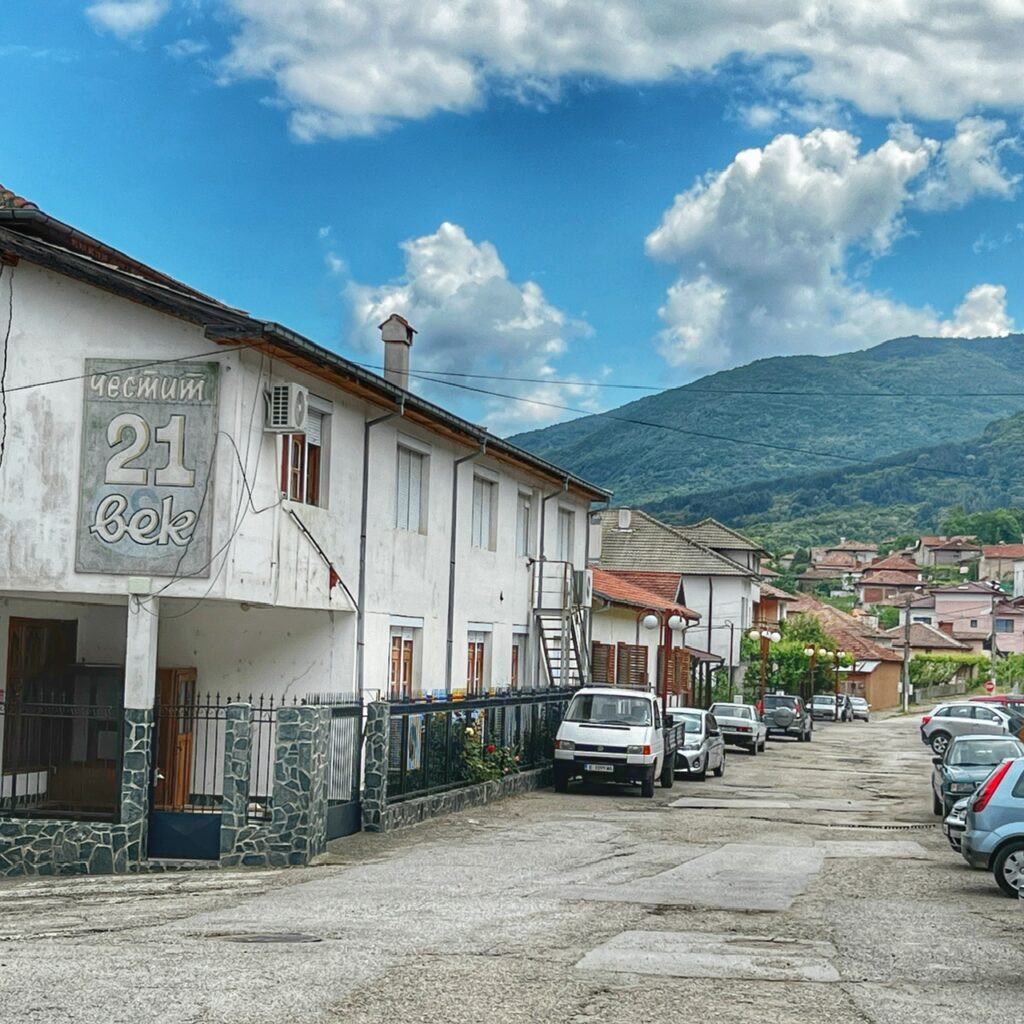
The residential showpiece of the town. If you head into the mountains you’ll find plenty of difficult hiking trails past waterfalls up the Demir Kapina Pass, to a ridge line that will drop you into a Greek village giving you the option to stay free at overnight huts. It’s all labeled and marked as is common in Europe. Other shots of Kolarovo, definitely the highlight of the driving loop.

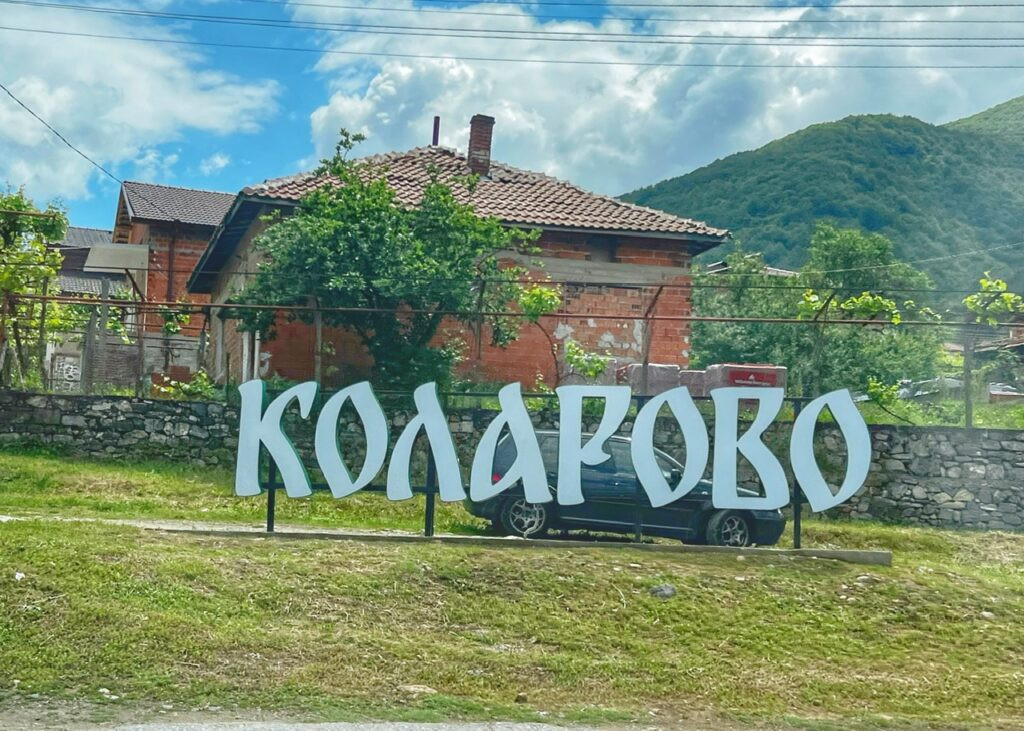
Some of these villages have even adopted our favorite cheesy town signs. They are a bit more interesting in Cyrillic though!



Moving into the other big city in the area of Petrich, which has 26,000 residents. Like everywhere, it had flowing fountains, a pedestrian street which was undoubtedly a bit more sad than Sandanski’s, but the fashion options were equally garish.
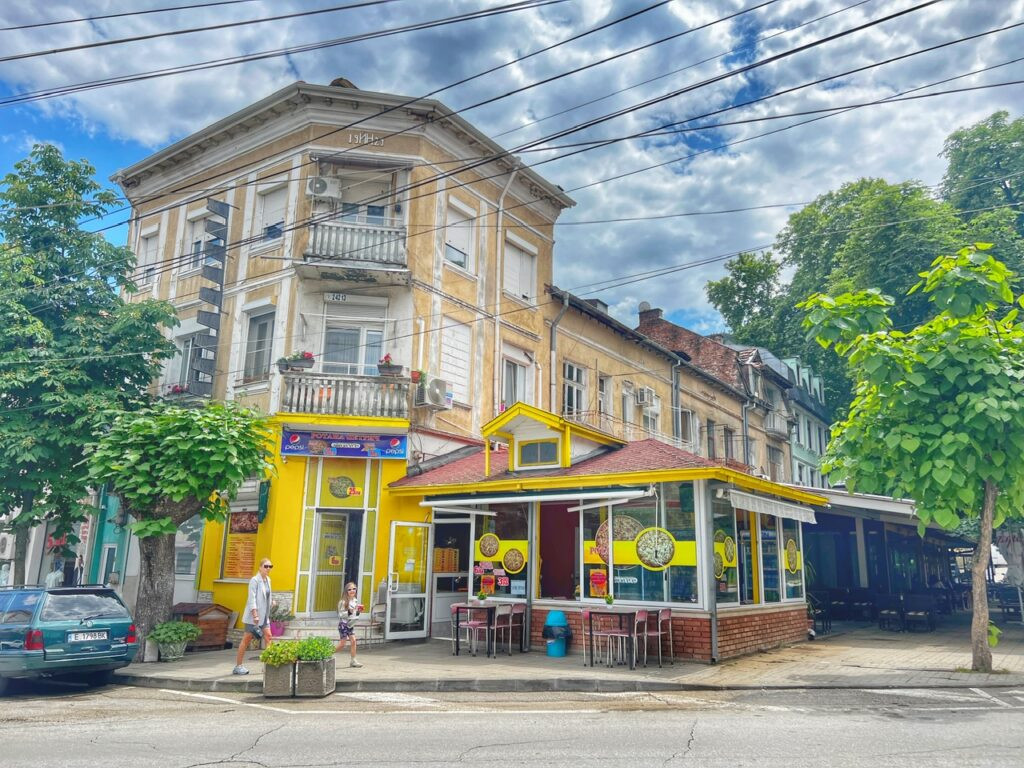
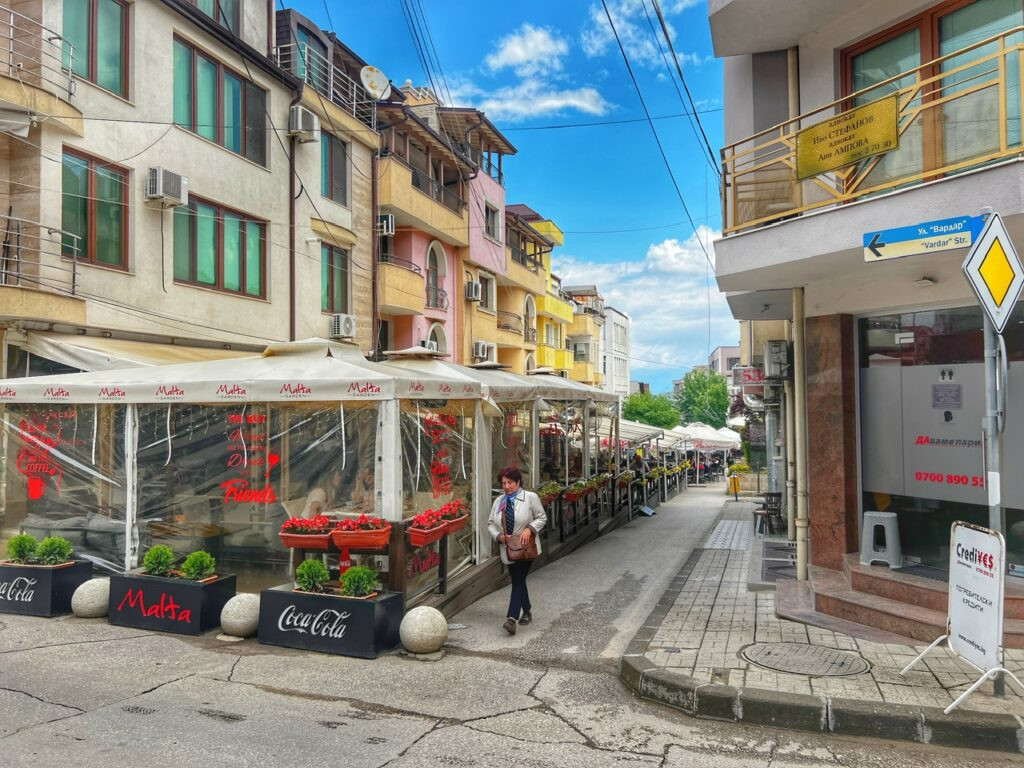
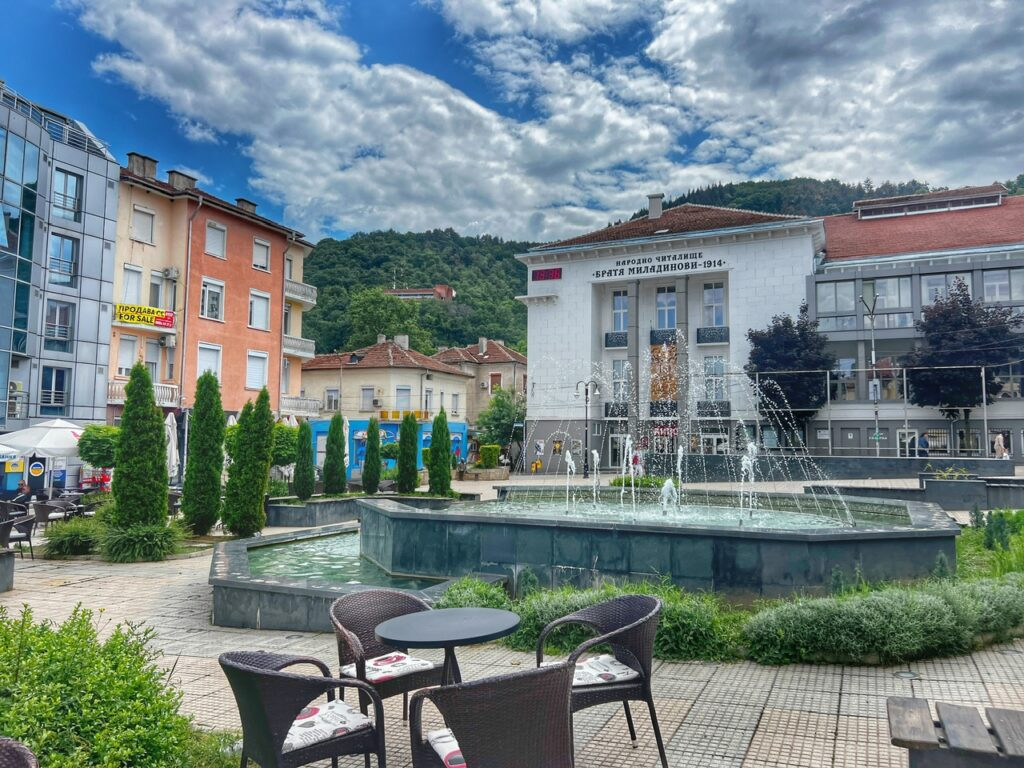
Near the center square, the streets of Petrich got a bit more charming, and offered plenty of alfresco seating like any good European city does.
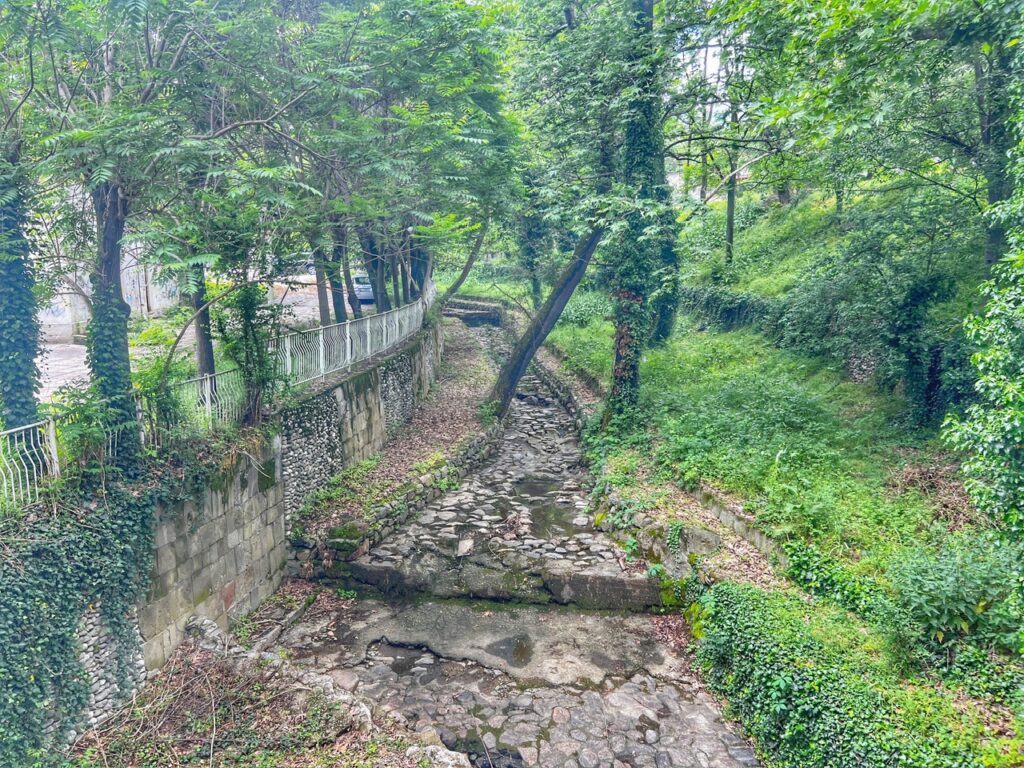
“A Riverbed Runs Through It.” It was notably quite clean however! The Bulgarians are quite good about keeping things tidy!
Rupite: Hot Springs, Archaeological Sites and a Great Mystic Healer
After traversing through dozens of unembellished villages and the giant metropolis of Petrich (ha!) in Southwestern Bulgaria, we found ourselves upon one last village of Rupite before looping our rental car back to Sandanski. Of all the places we’d gone so far that day, Rupite certainly had the most to tickle the tourist’s appetite, although it still remains far off the beaten path for most travelers.
These tastes included one of the most significant archeological sites, which served as a staging ground for Alexander the Great, the serene home and final resting place of Bulgaria’s most well-known and mystic healer who has been feted as a 20th Century Nostradamus, and a piping, free, rustic hot springs for you to do some of your own healing.
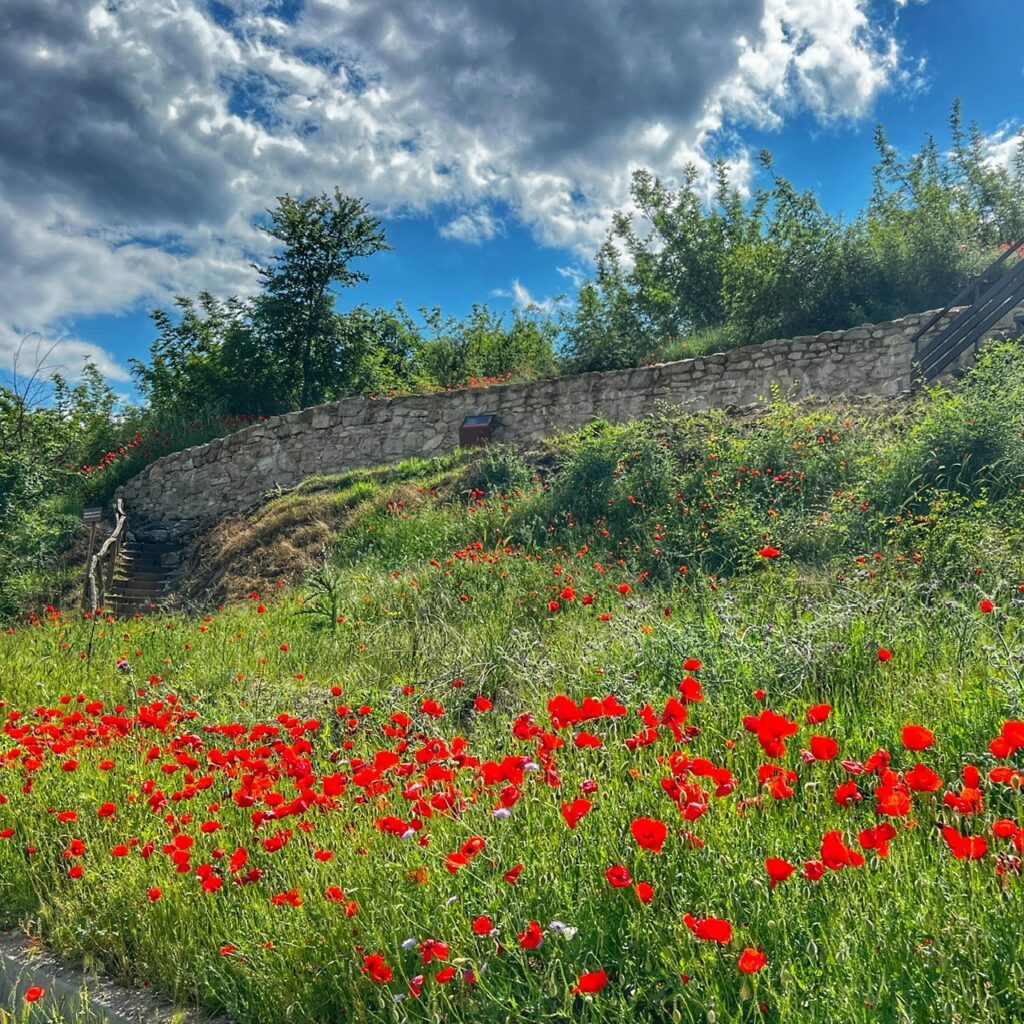
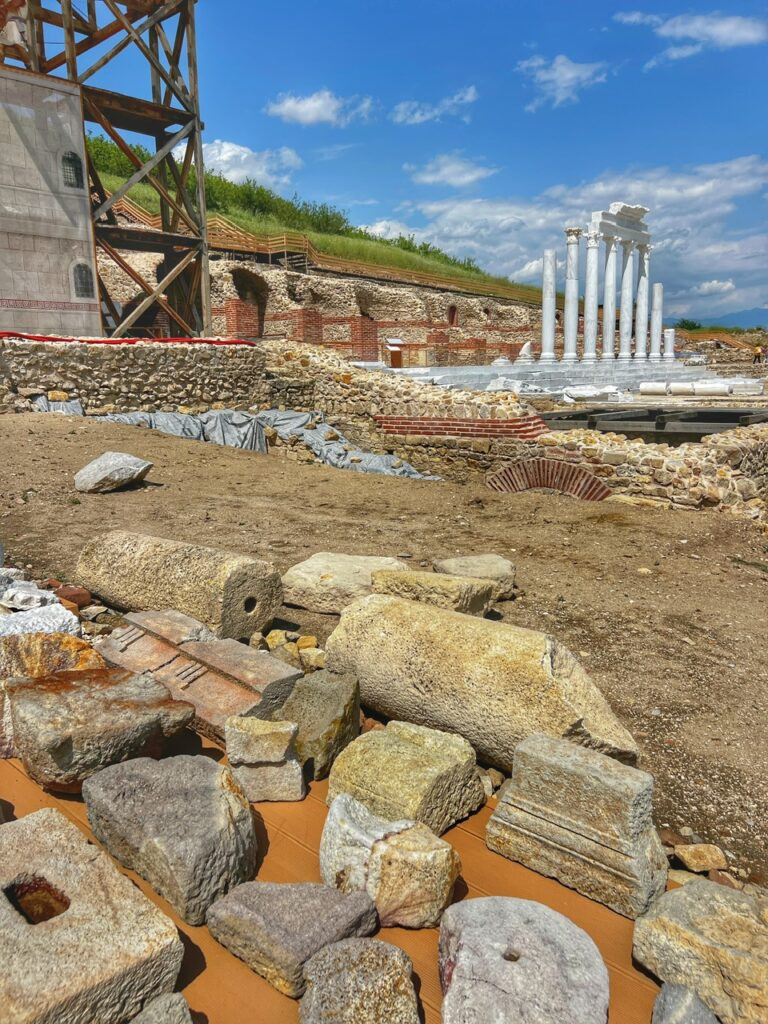
And of course, it offered more poppies, which we can’t get enough of, but this time they’re adorning an ancient stone wall, making them even more ravishing. This wall was found at the edge of the ancient city of Heraclea Sintica, a city which existed for nearly 1000 years, from the 4th century BC to the 6th century AD.
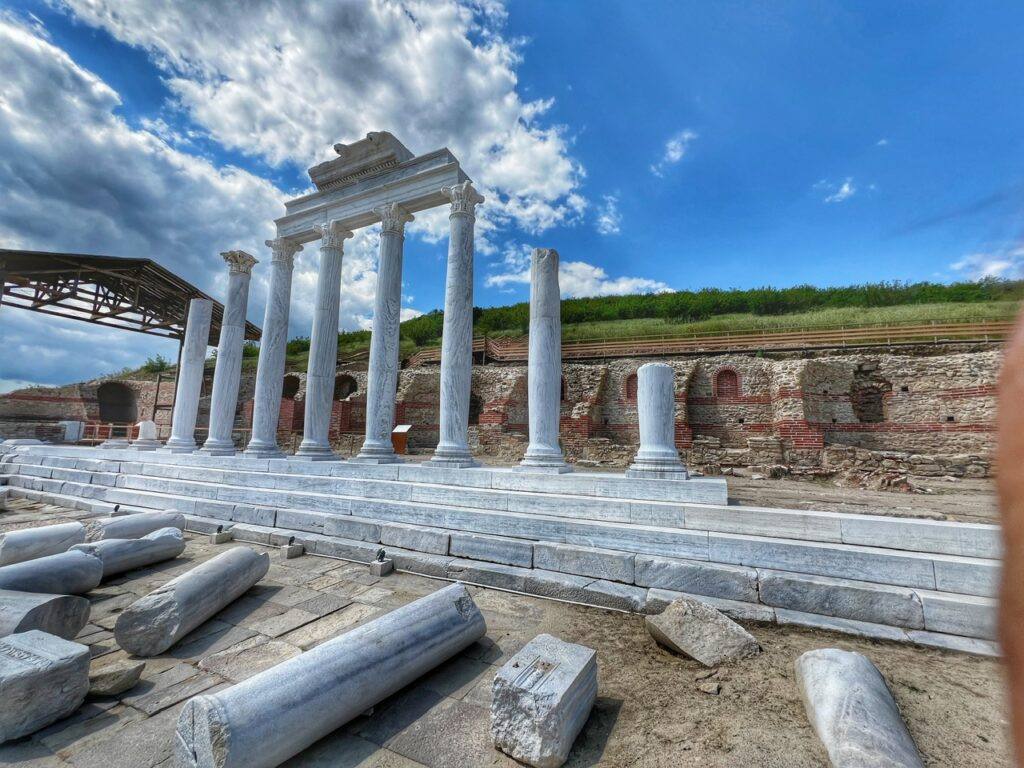
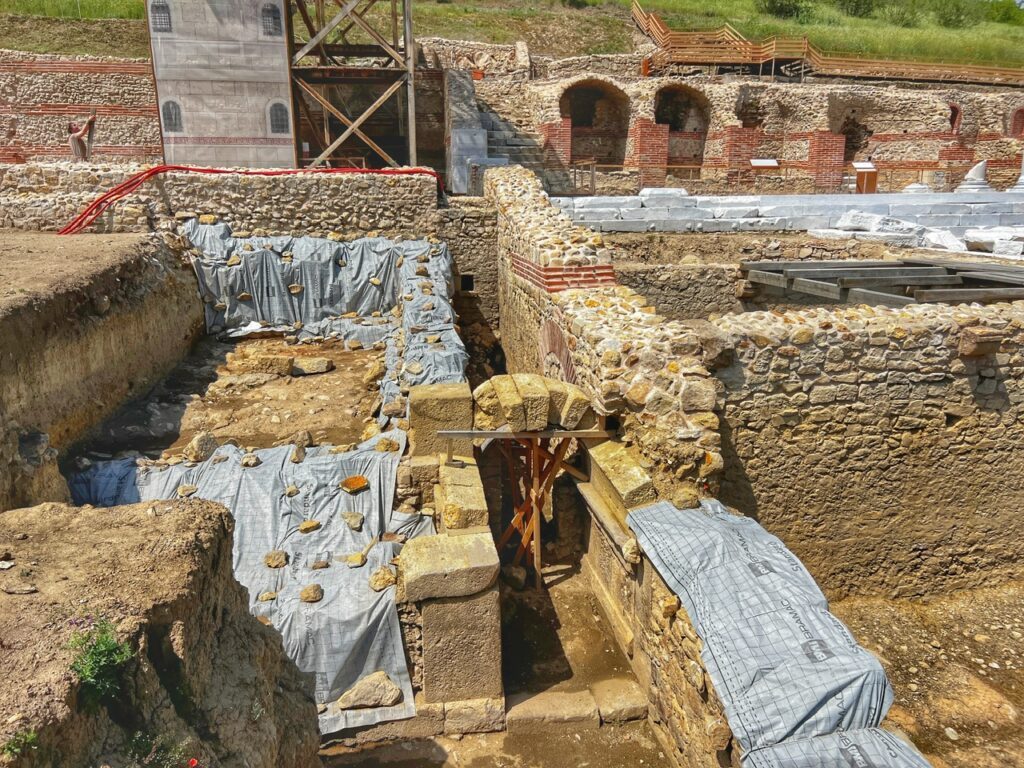
To enter the ancient city of Heraclea Sintica, tourists can pay $5.70 to enter, or stand on the sidelines and snap some pictures. To save a little cash, Greg headed in while Mandy admired it from the outside, and fed the patrolling kotki instead (cats, of course). According to the tourist brochure, Heraclea Sintica existed during “a time when the population and its rulers showed enviable adaptability in the dynamic and often changing political and economic picture over the centuries.”
The city was named after the mythical hero Herakles (Hercules), and it became a strategic urban center in the northeastern reaches of the ancient Macedonian kingdom. It is also where the first military campaigns of Alexander the Great began, as he marched against neighboring Thracian tribes before conquering the vast Persian Empire.
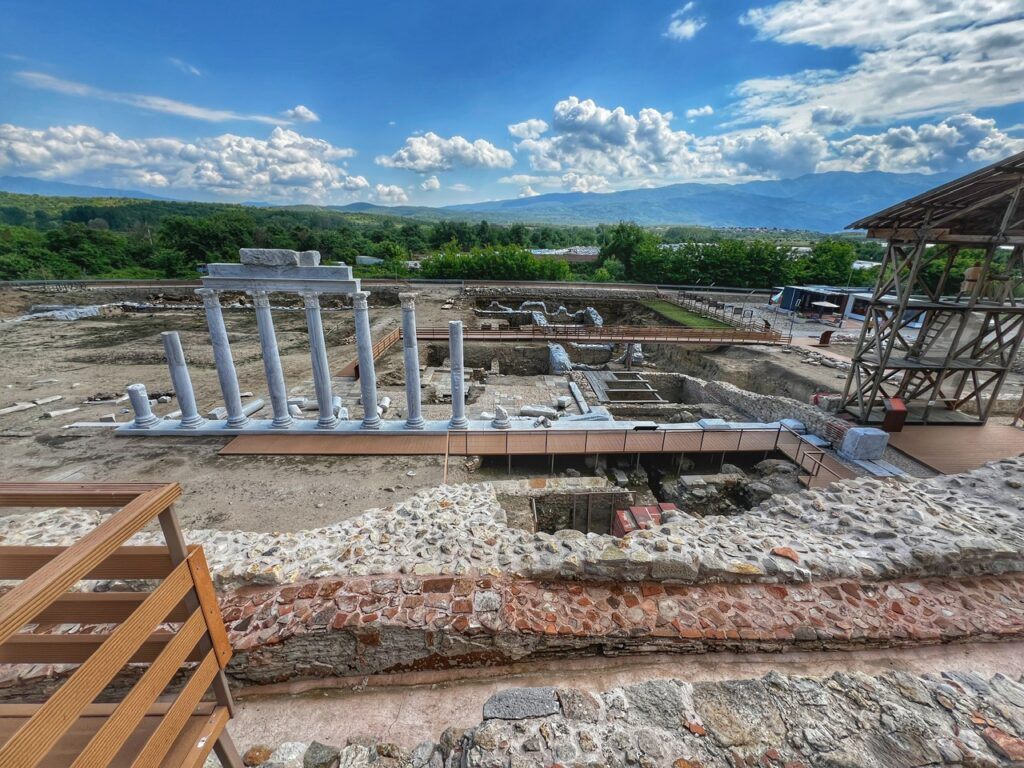
By 6th Century AD, there was a series of devastating earthquakes which brought Heraclea Sintica tumbling down and it was eventually abandoned. Rediscovery happened in the early 2000s and the real work has been happening since 2010. They have found remnants of temples, baths, buildings, inscriptions and statues and are still under massive restoration.
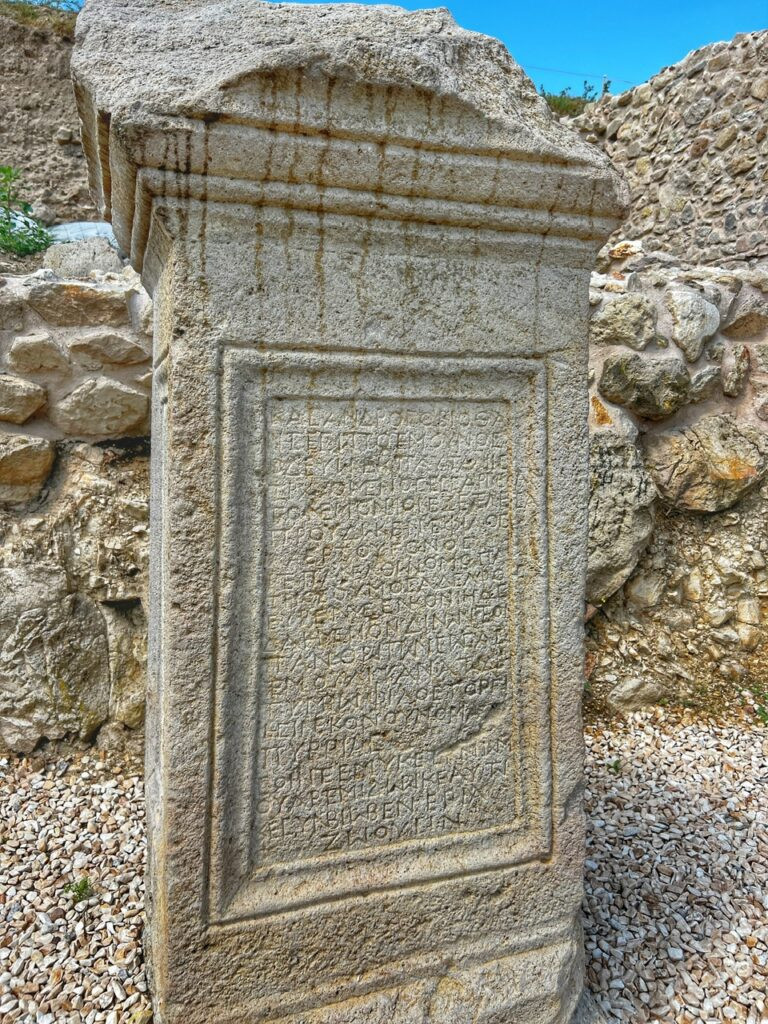
This inscription dates from the second half of the 2nd to the beginning of the 3rd century was found in the western necropolis of the Heraclea Sintica. The translation reads:
“I, Cassander, who died a violent death, ended my life when I was once traveling alone from Pautalia (today Kyustendil) and going to Sarmea (= Heraclea Sintica?) I was betrayed by a friend, (similar to) the son of Leartes (= Odysseus). Then my brother by common father, returning, found me in the dust, destroyed by terrible men, and saving my remains, (laid them) in this grave in token of brotherly love; his name is Pirius. Except for me, (he made the tomb) and for the living: for my child Artemidorus myself and for (his/my?) wife Venus.”
Wow, now the is quite a legacy?!
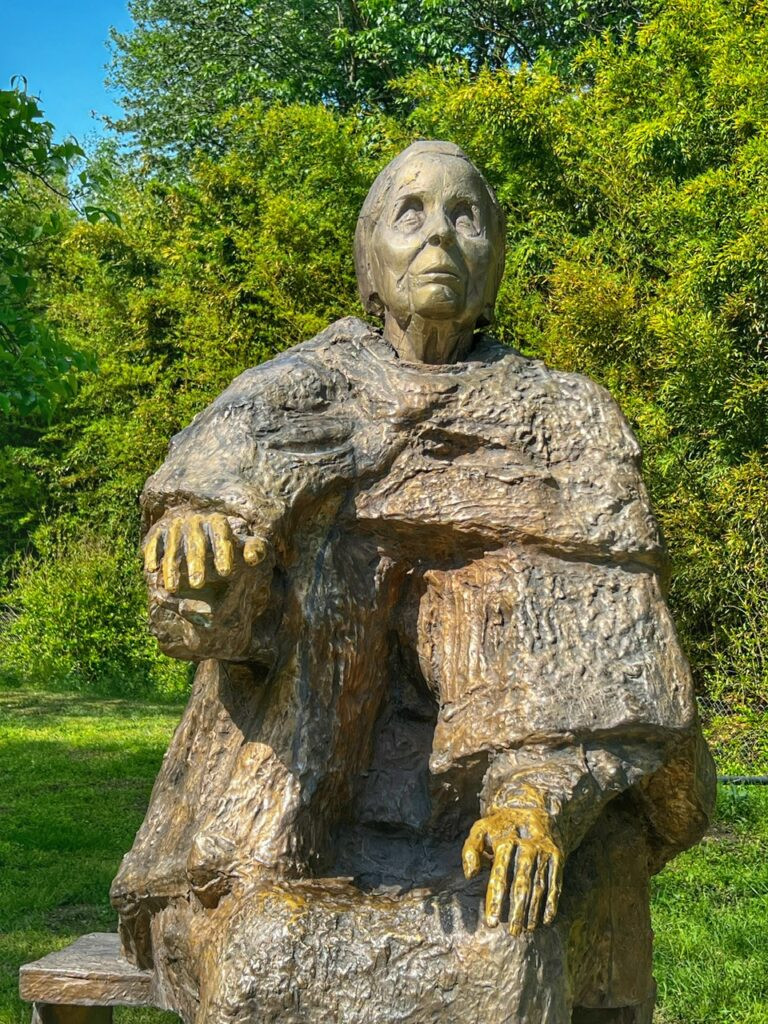
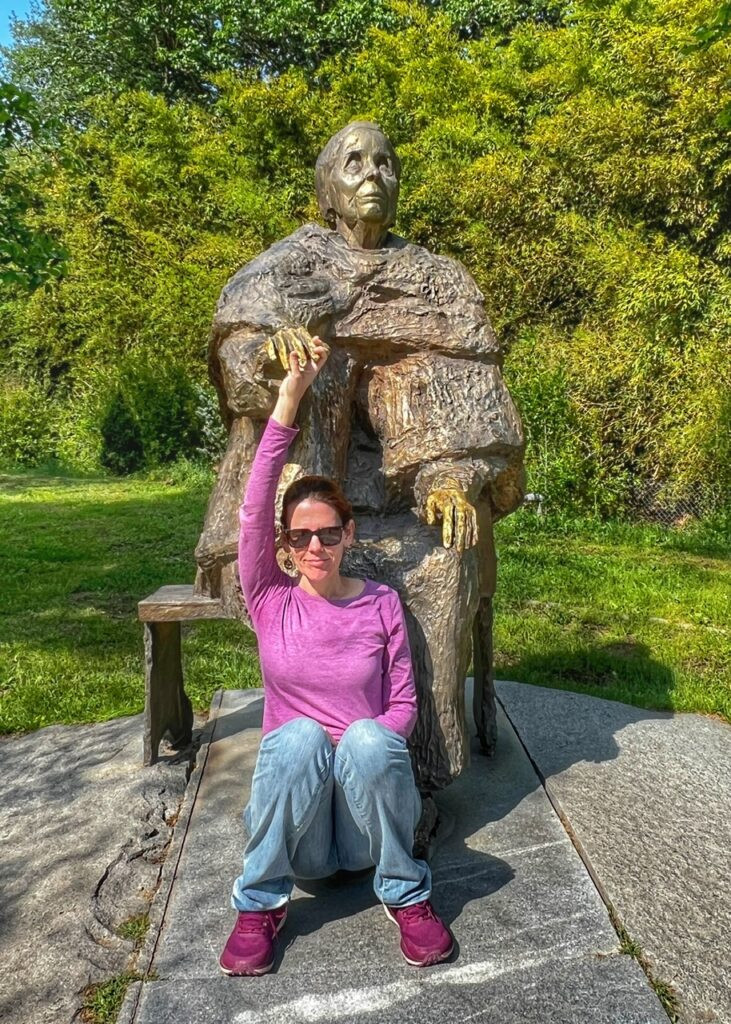
A statue of Baba (Grandmother) Vanga, who is Bulgaria’s highly distinguished healer widely believed to possess clairvoyant powers, despite the fact she was blind. Born Vangeliya Pandeva Gushterova, Baba Vanga lived much later than those times and her value was greatly acknowledged until her untimely death in 1996.
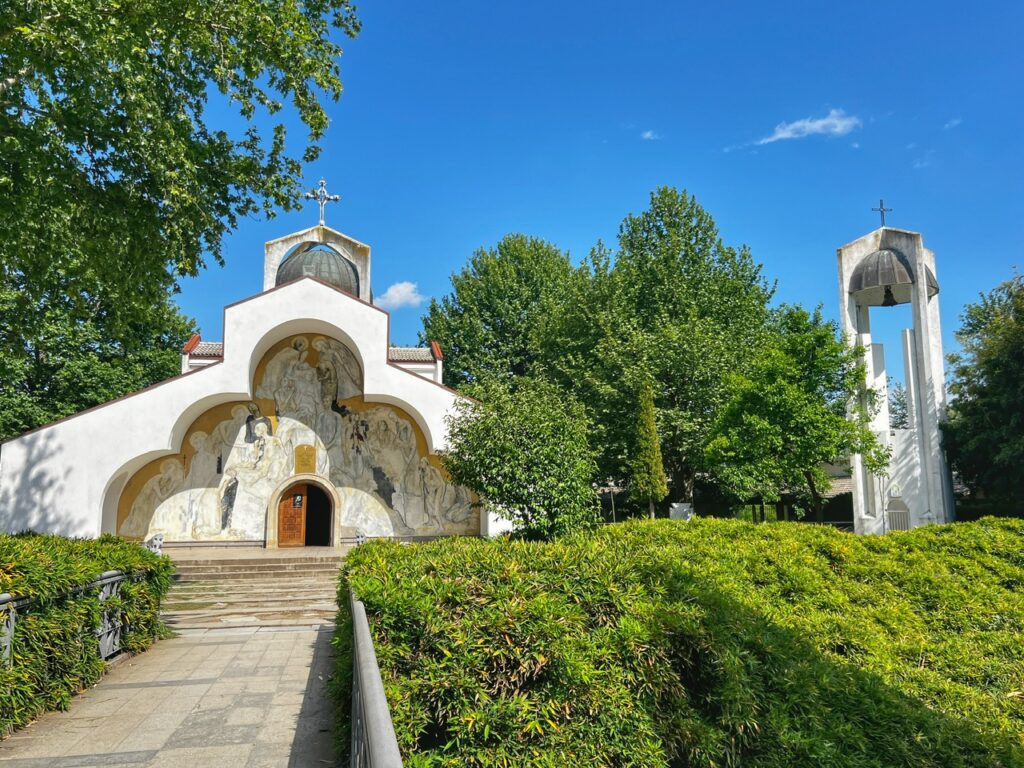
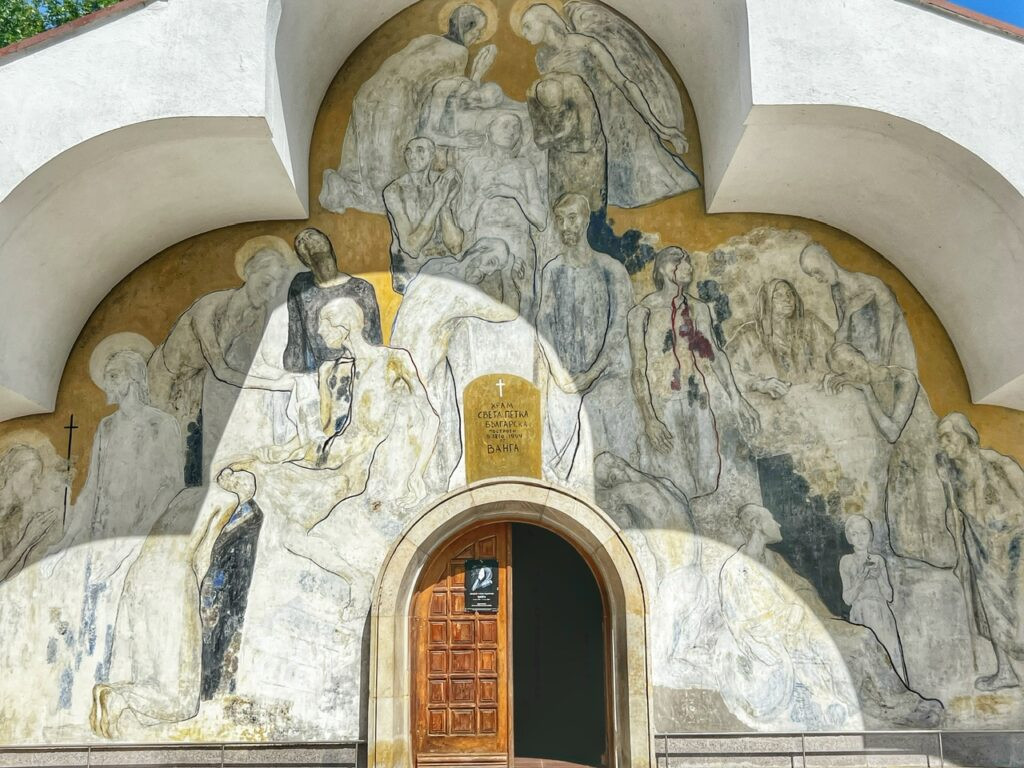
The grounds where she lived features tranquil gardens, a turtle pond, walking paths, her private cottage where she did psychic readings, as well as a uniquely designed church that stands as a symbol of gratitude from her visitors. We couldn’t help notice the images on the outsides of the church seemed a bit…cryptic.
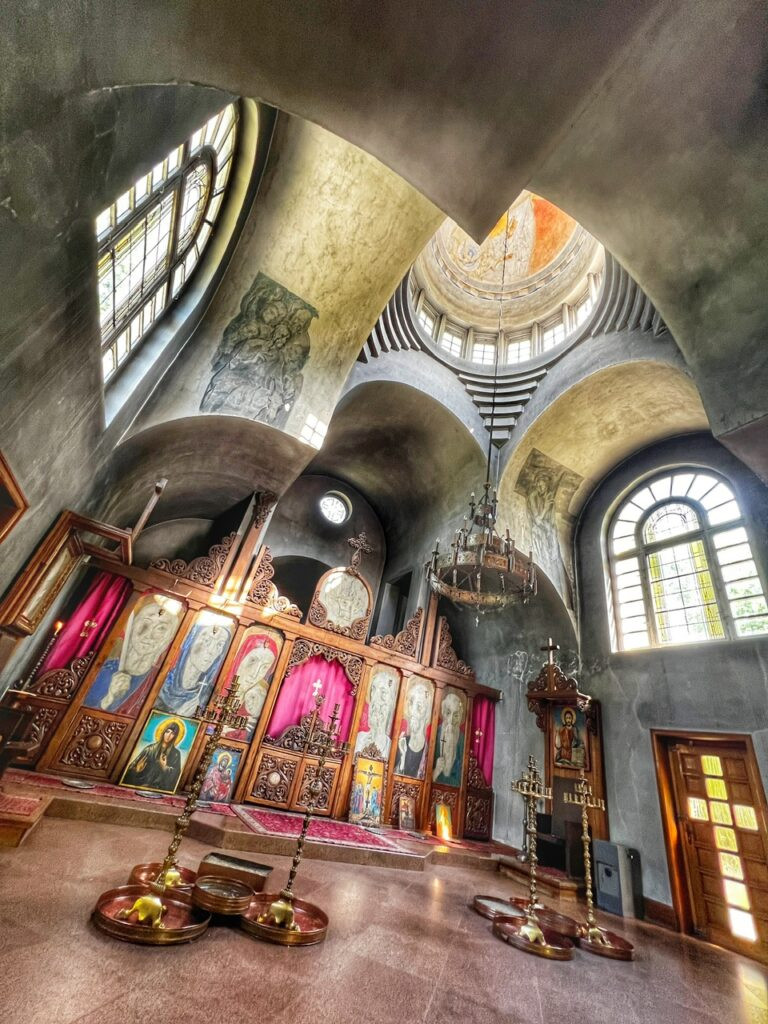
The inside of the church.
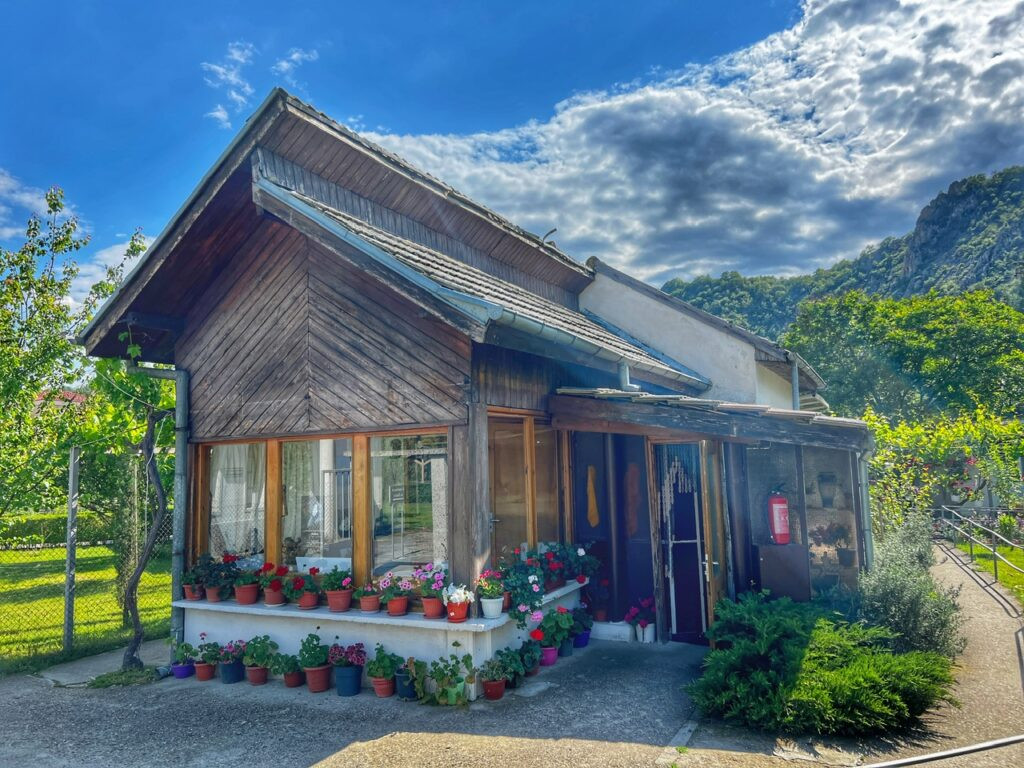
The Cottage of Vanga was constructed in 1970 and Vanga inhabited it until her last days on the Earth, when she endowed all of her personal property and real estate to the Bulgarian state. This is one reason we were able to visit her site free of charge to this day.


Baba Vanga is known to have helped many common men (and ladies too, of course) with healing and prophecies. But, in addition to helping the normal masses who lined up at this very bench, Baba Vanga has also been feted as a 20th Century Nostradamus, even reporting foreseeing “events” such as the dissolution of the Soviet Union in 1991, her own death, September 11th, the 2022 wide scale droughts and fires, Barack Obama/Donald Trump and Brexit. (Although they are ambiguous at best.)
For example, in 1989, she said, “Horror, horror!’ The American brethren will fall after being attacked by the steel birds. The wolves will be howling in a bush, and innocent blood will be gushing.” According to her true believers, the ‘steel birds’ refer to the hijacked planes, while the ‘American brethren are the Twin Towers. It’s also striking that she uses the word ‘bush’. This may be interpreted as a reference to then-President George W. Bush, who would lead the ‘wolves’ of American military might in the retaliatory War on Terror. (Source: History(.)co.uk)
Many of Baba Vanga’s predictions involved politics, and she also reportedly prophesied that the 44th US president would be a black man. Sure enough, Barack Obama would take over from George W. Bush as the 44th leader of the free world. What’s more, she appears to have foreseen the evolution of the so-called culture war, and the emergence of Donald Trump as Obama’s successor in a time of cultural tumult. According to an undated statement, ‘Everyone will put their hopes in him [Trump?] to end it, but the opposite will happen. He will bring the country down and conflicts between north and south states will escalate.’
She also predicted 2023 strikes by nuclear bioweapons (Russia/Ukraine?), a major economic crisis in 2024, a shift in economic power from the West to the East, and that escalating debt levels could be an issue. And cheerily, of course World War III sometimes in the 2020s (?) For the record, she’s also made plenty of predictions that fortunately haven’t come true like a 2023 solar storm hitting the planet although her fans say she’s 85% accurate. Also, not really any clear mentions of the 2020 pandemic.
Anyhow, this was an interesting and cheery wormhole to delve into that we knew nothing about…
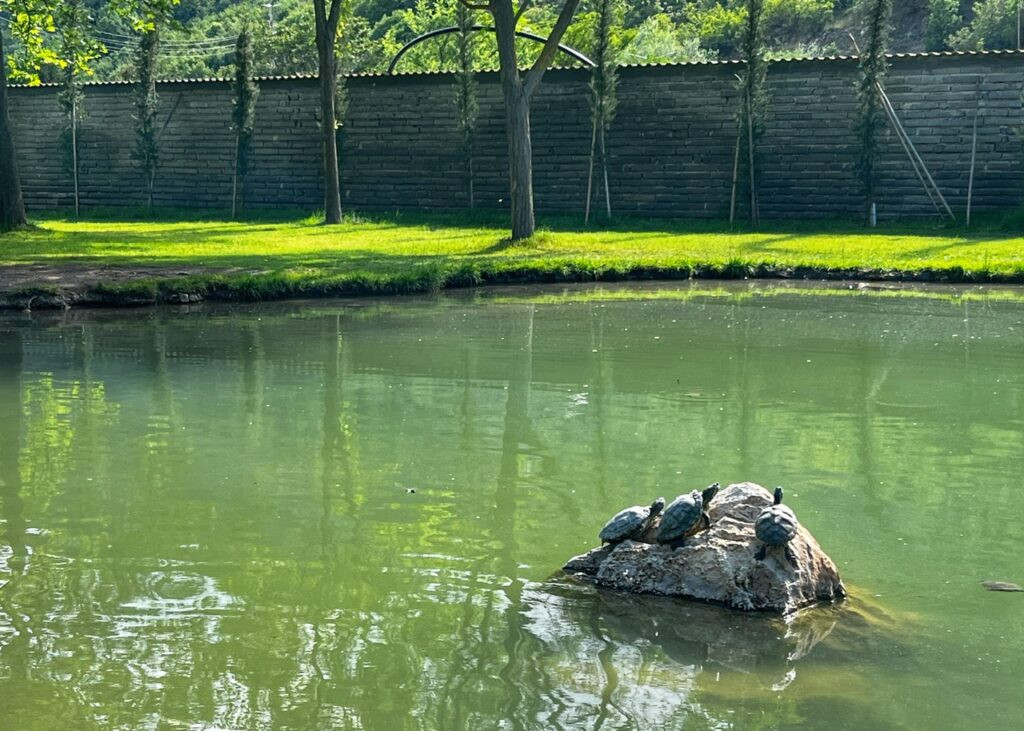
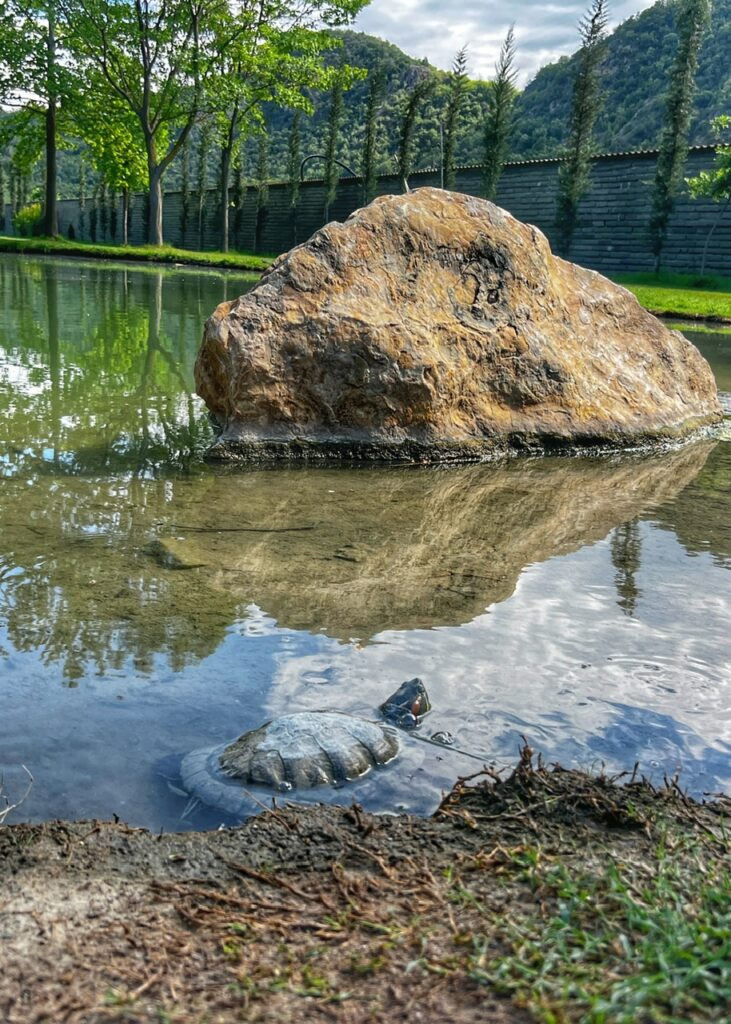
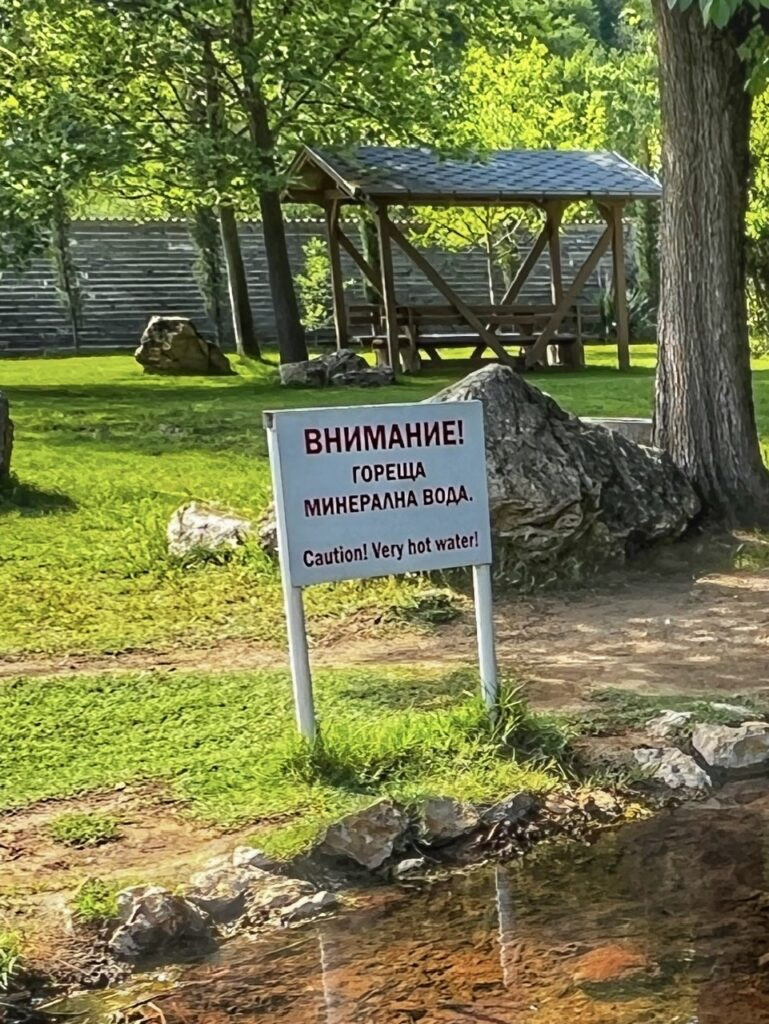
Her turtles don’t seem to have a clue either. They are also living in a pond that seem warm…for reptiles anyways. Fortunately, none were congregating in this water however, which was clearly labeled as hot…
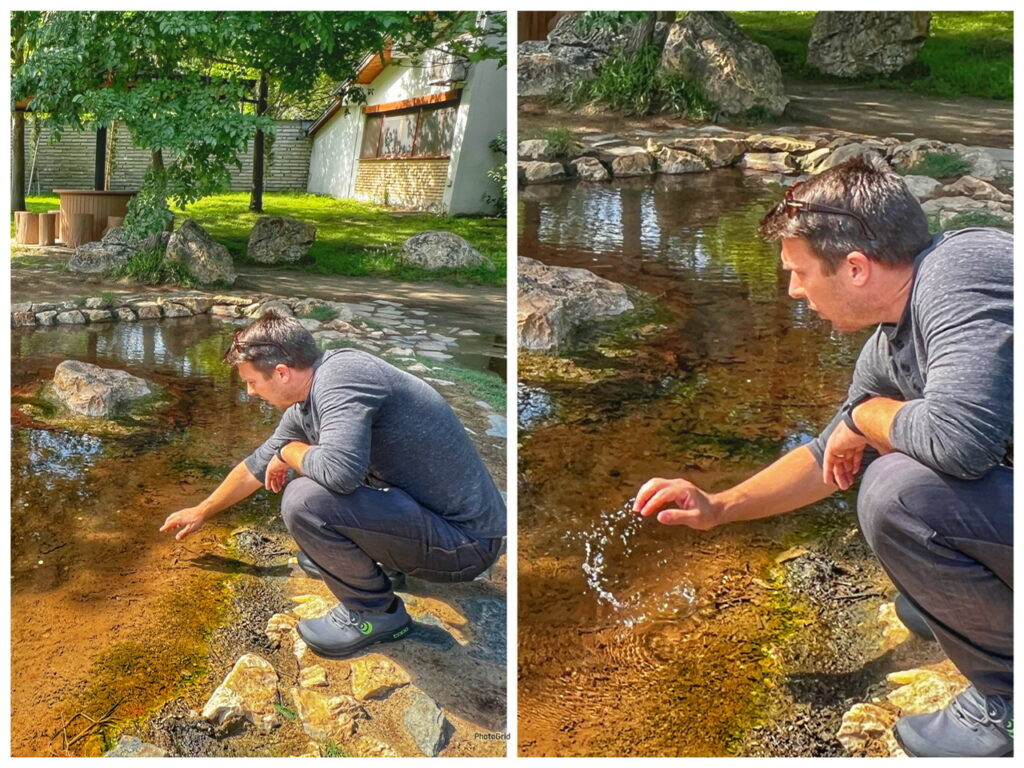
…though a certain guy had to double check its accuracy. Yep, “it’s pretty hot,” he declared snatching his hand away. No duh. 🤣


Indeed, Baba Vanga lived within a unique geothermal landscape, rich in hot mineral springs, and amongst soil exuding the perfect amount of fertility for countless numbers of vineyards.
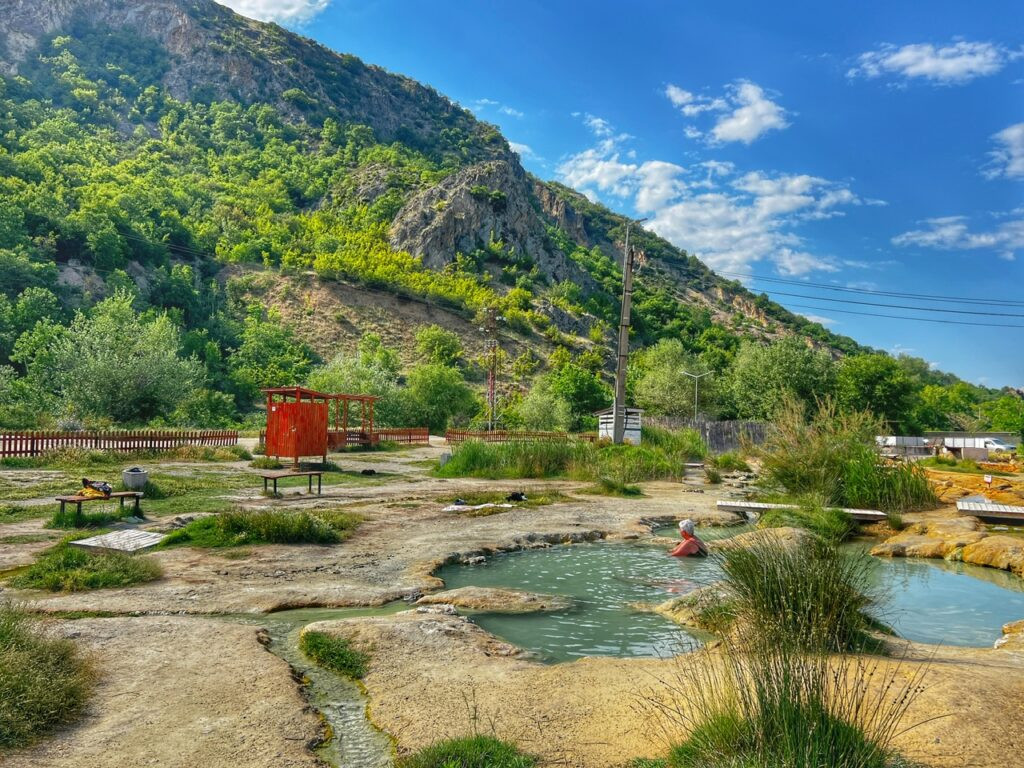
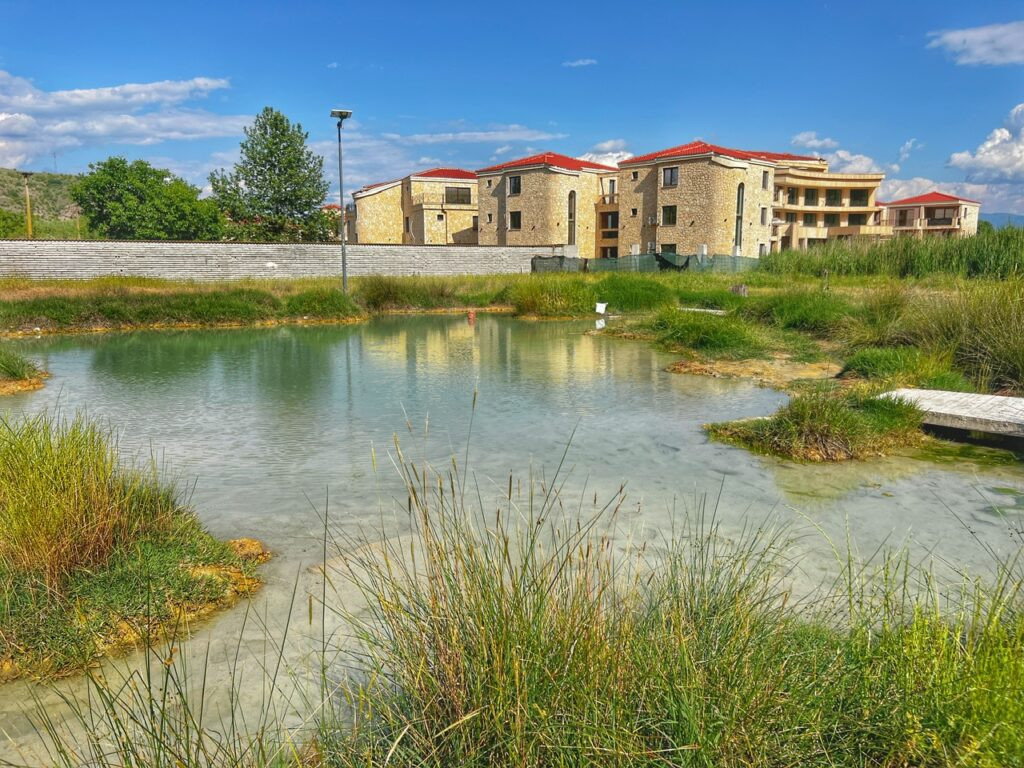
Thus, we moved on to the nearby mineral hot springs, which were public, free, encompassed by nature, and rustic…all of our favorite things when it comes to a good soak. There were a couple of changing rooms, as well as a free parking lot with a very appealing set-up for van lifers.
The only thing a bit disturbing about it was the massive hotel, which is being built next door. I’m afraid the free and uncrowded days for this little paradise may be numbered.
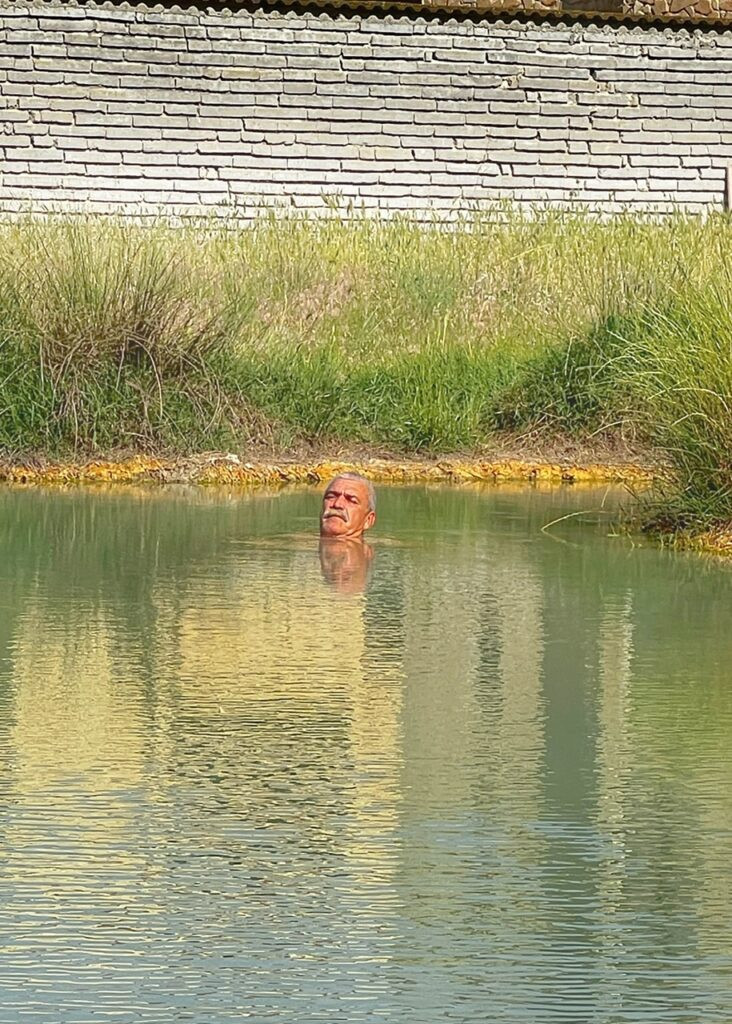
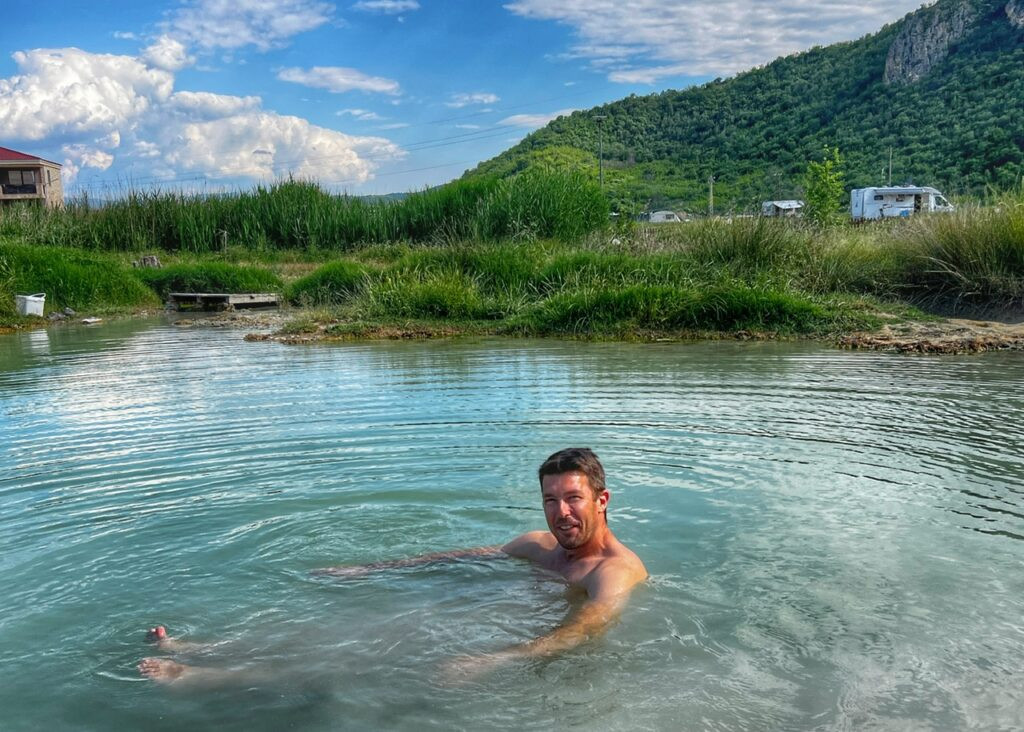
For now, however, we were one of a handful, including this adorable bobbing head, which we would soon become one of, complete with a mineral-laden mud scrub scooped from the bottom of the pools. Now, this is the good life!! 😁
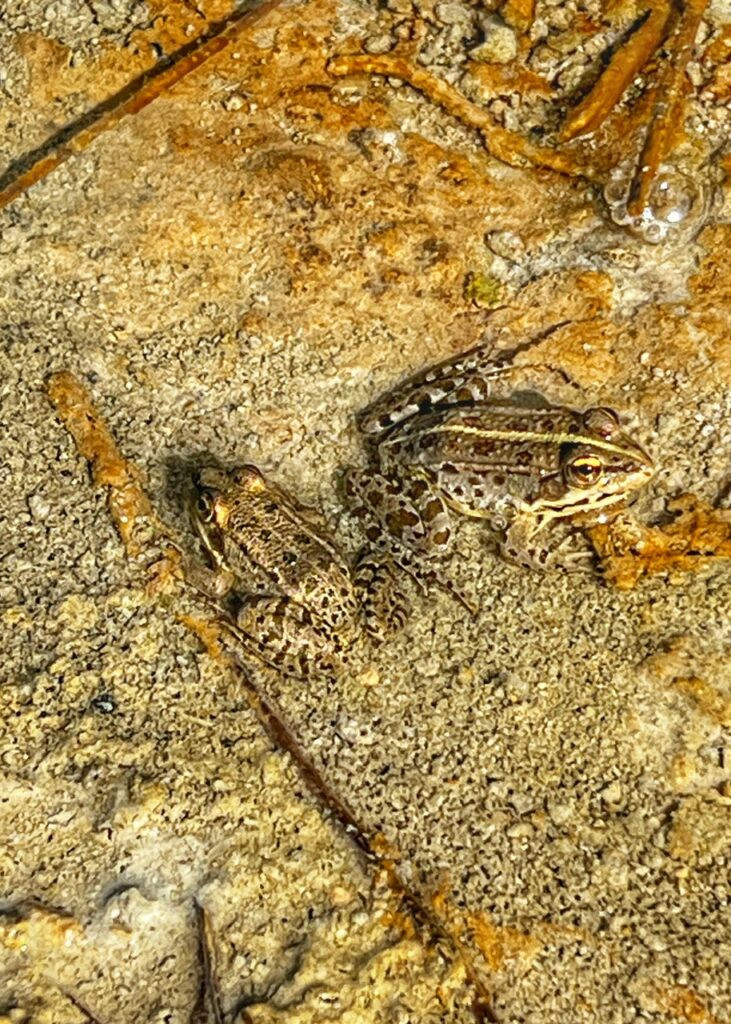
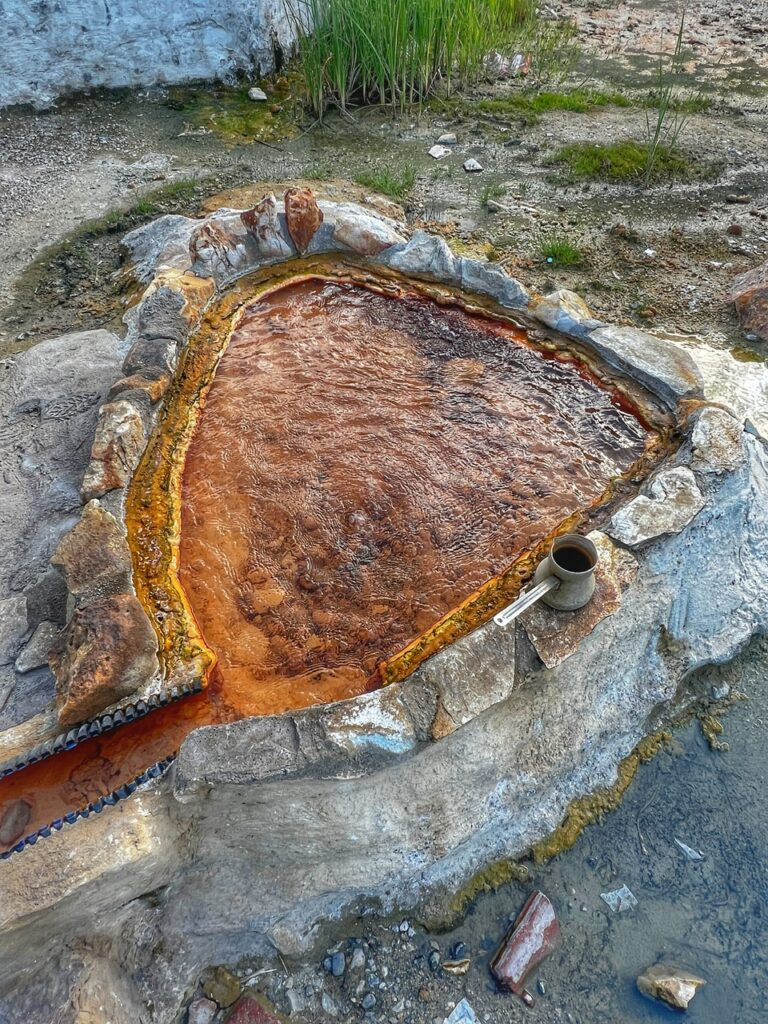
Also, surprisingly, despite the bathwater temperatures of the water, clusters of amphibians seemed to happily hop near the water’s edge. This was near the source of the hot springs…a coppery, and bubbling geothermal godsend.
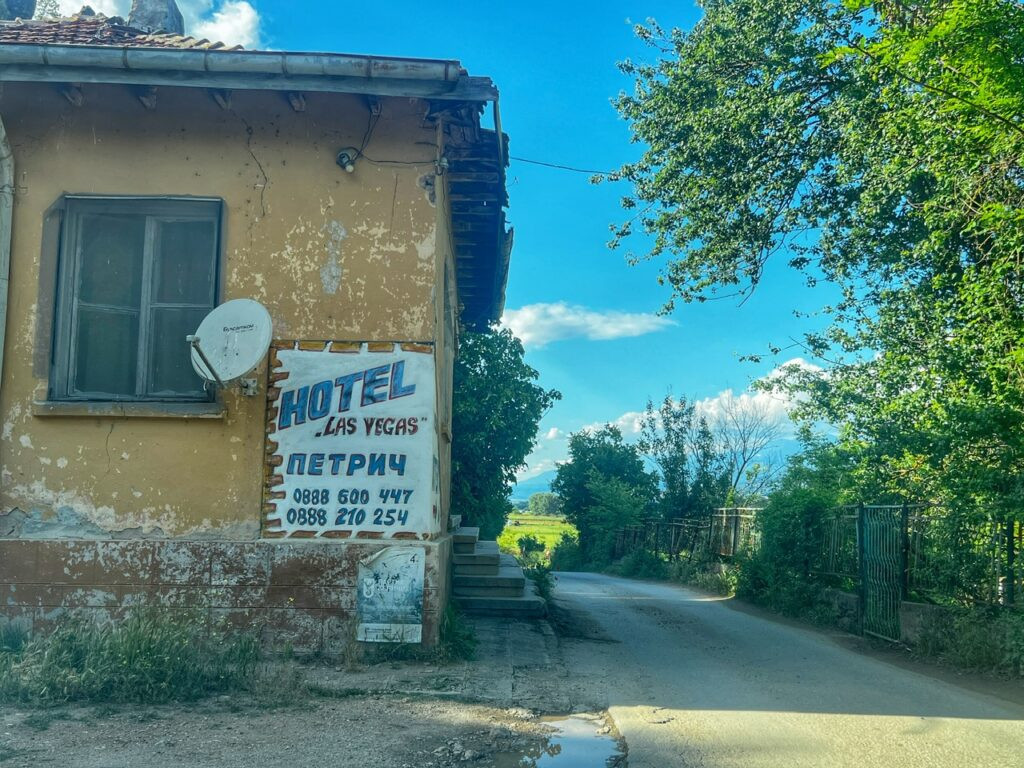
On the way out, we happened upon the remains of the Hotel Las Vegas…in rural Bulgaria. The thing is, our spa treatments here was far more interesting (and cheap) than those back at home!

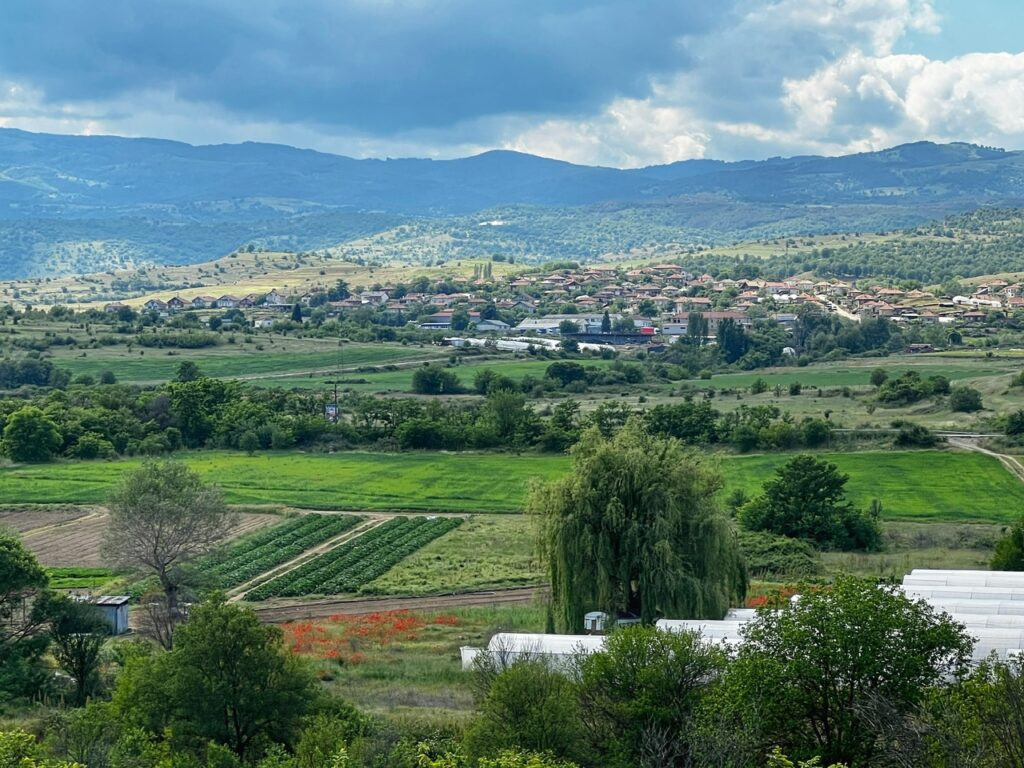
A tiny church on the way to Baba Vanga’s refuge was also worth it for the view. Rupite, Bulgaria. A place we’d definitely…. repeat-eh?
A Venture up to Illidentsi
Once upon a time, three years ago, I (Mandy) was in Europe and couldn’t walk. While this was heartbreaking for me, it was a time of profound growth and personal development, and I certainly know it happened for a reason. That said, this is truly why, I have treasured being back in Bulgaria during the month of May thanks to idyllic springtime weather and ample opportunities to put one foot in front of the other.
And we also discovered, it doesn’t really matter what direction you point your toes from Sandanski, you will inevitably discover something that’s worth your time. But…first you gotta get there. And, after one too many budget busting car rentals, we resorted to the municipal bus, from the uber-local bus station (behind the Billa), to drop us off somewhere really random….a village north of here called Strumyani, followed by a 3km uphill walk to the seemingly bygone establishment of Ilindentsi.
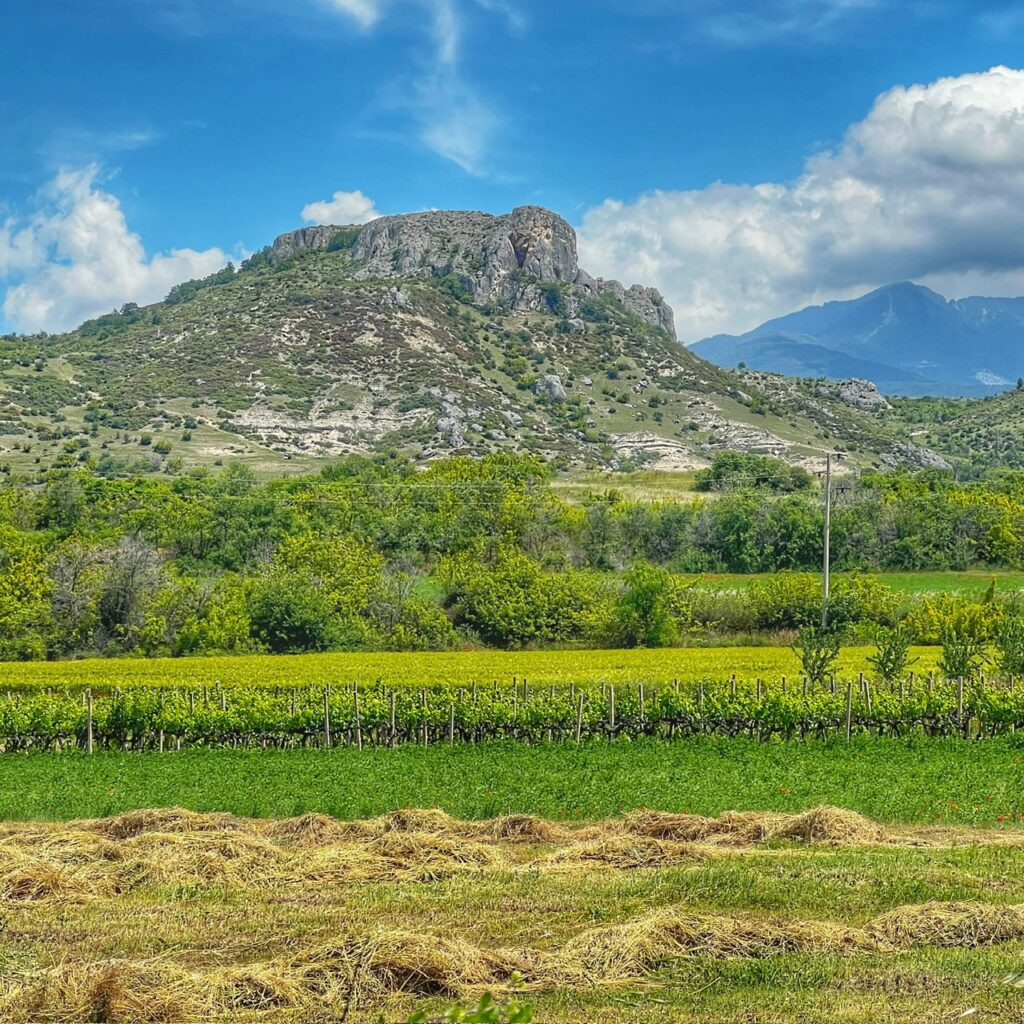
The area around Illindentsi is characterized by a beautiful backdrop of natural limestone formations, and like everywhere in this region, is blanketed by vineyards. It’s also renowned for its marble industry, housing some of the largest marble quarries in the Balkans.
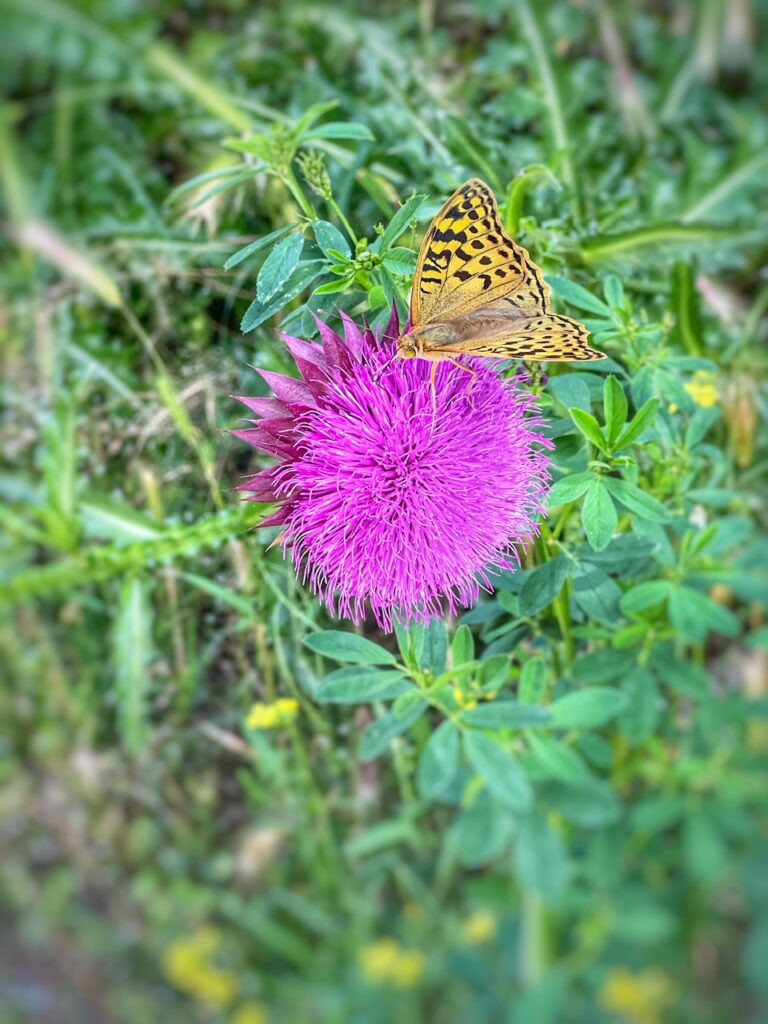
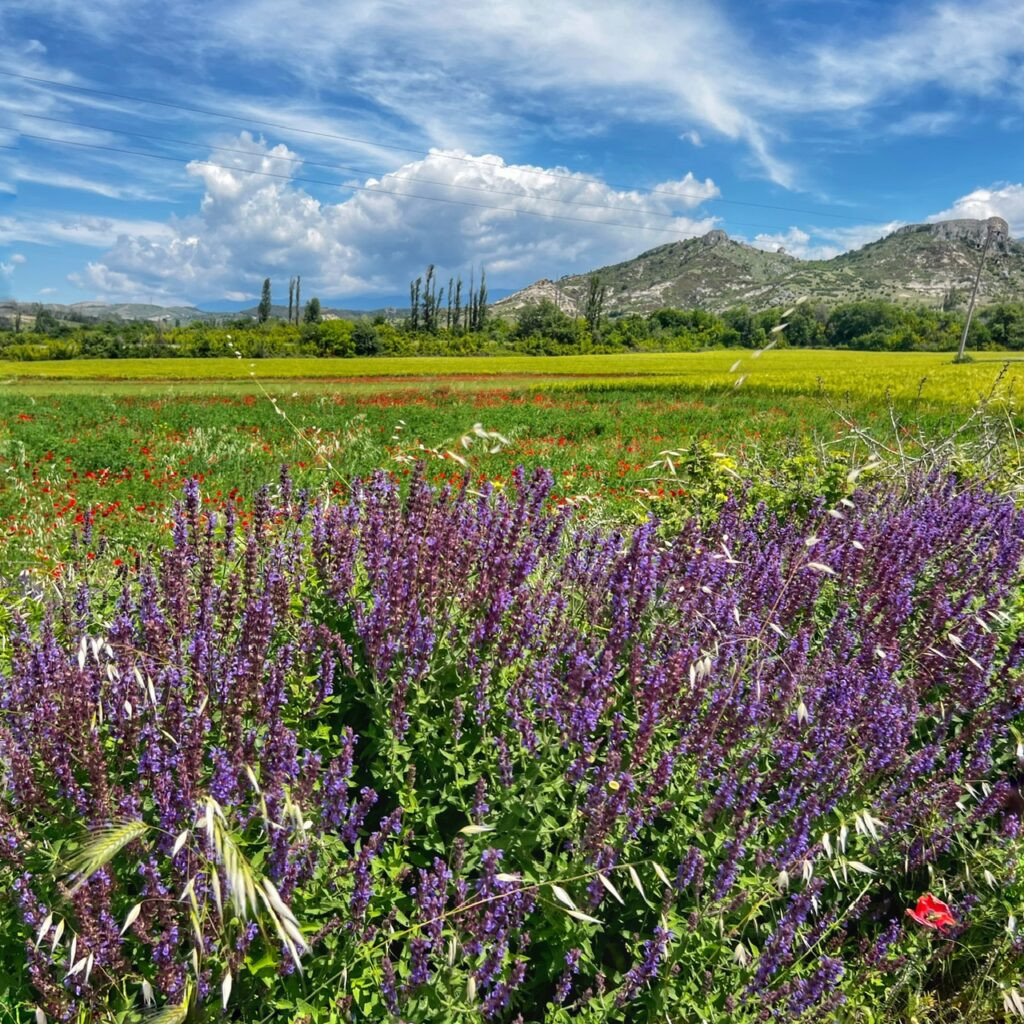
A cardinal butterfly on a perfectly pom pom’ed thistle, as well as a normal carpet of wildflowers.
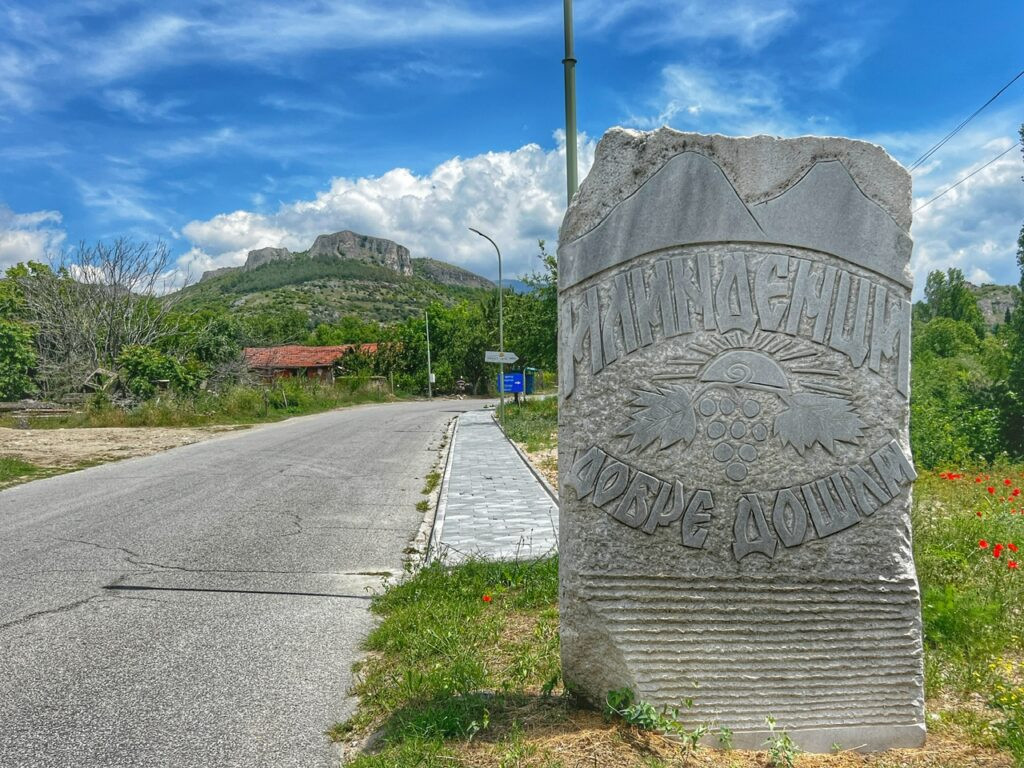
Breathing in the soft breeze, we followed the road until being welcomed to Illidentsi.
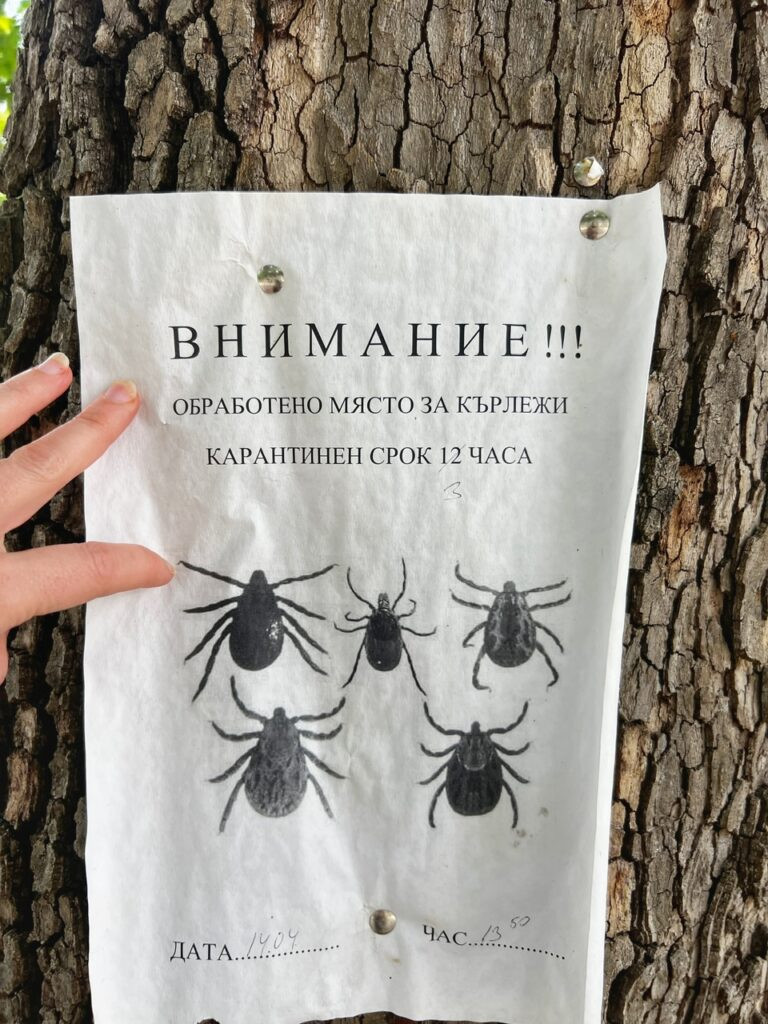
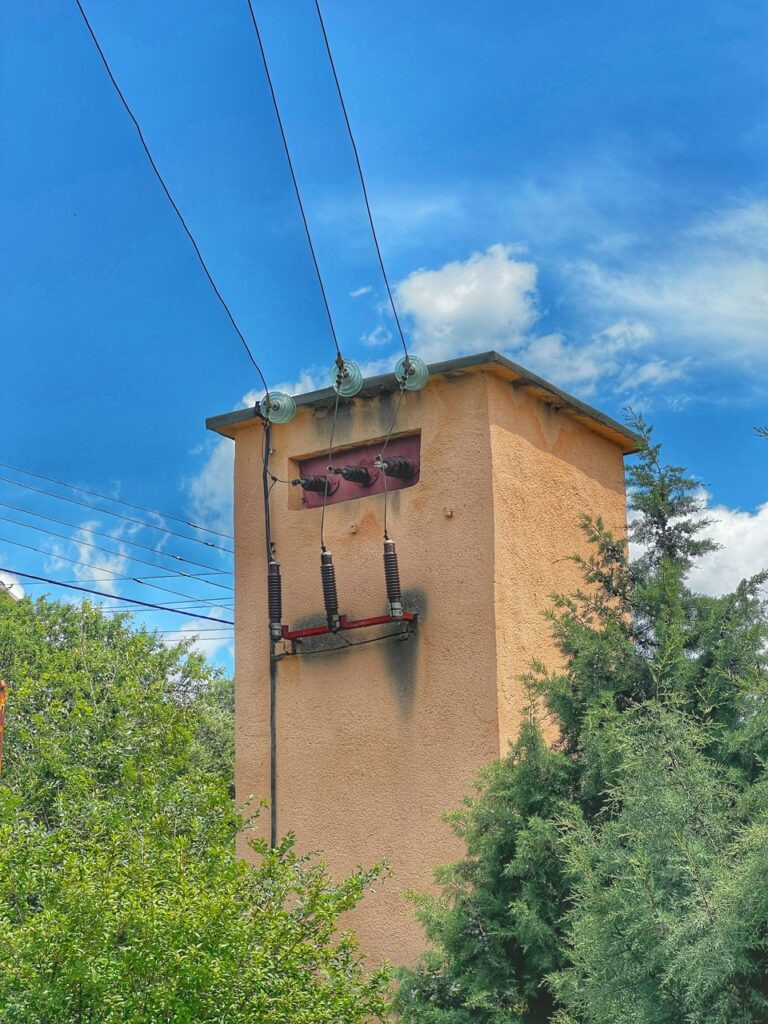
A sign warning us of ticks in the area! Eek! It seems they’ve been treated though!? Also, a rural Bulgarian electric “pole.”
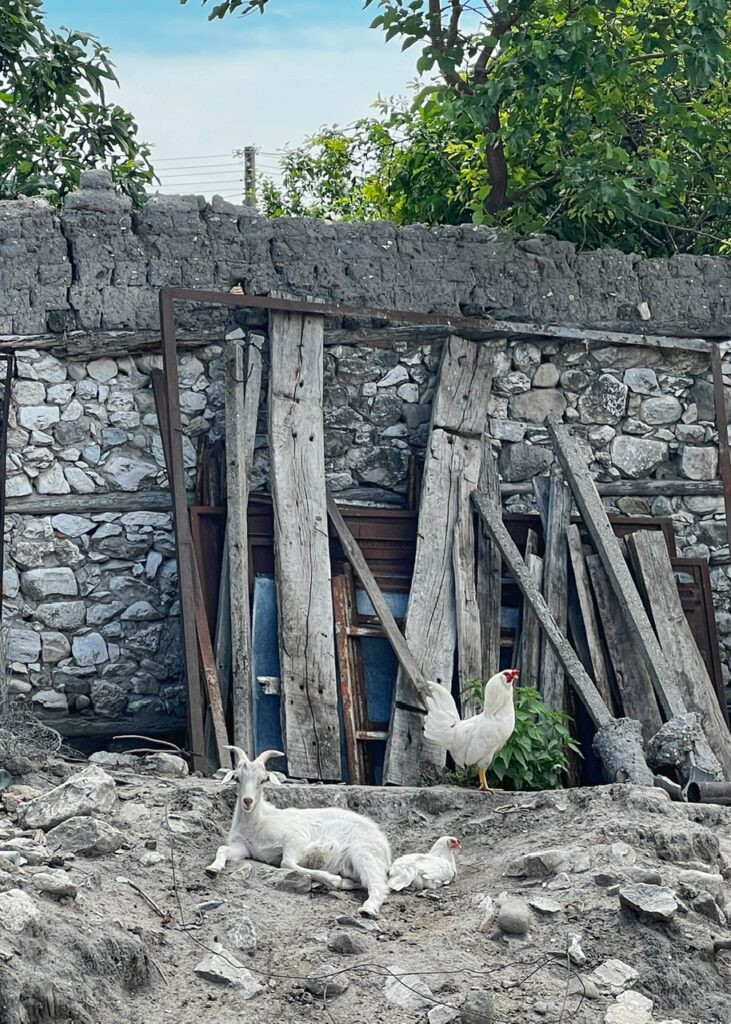
During our hour in the village of 900 inhabitants, we didn’t see a single person, but this goat was definitely checking us out.
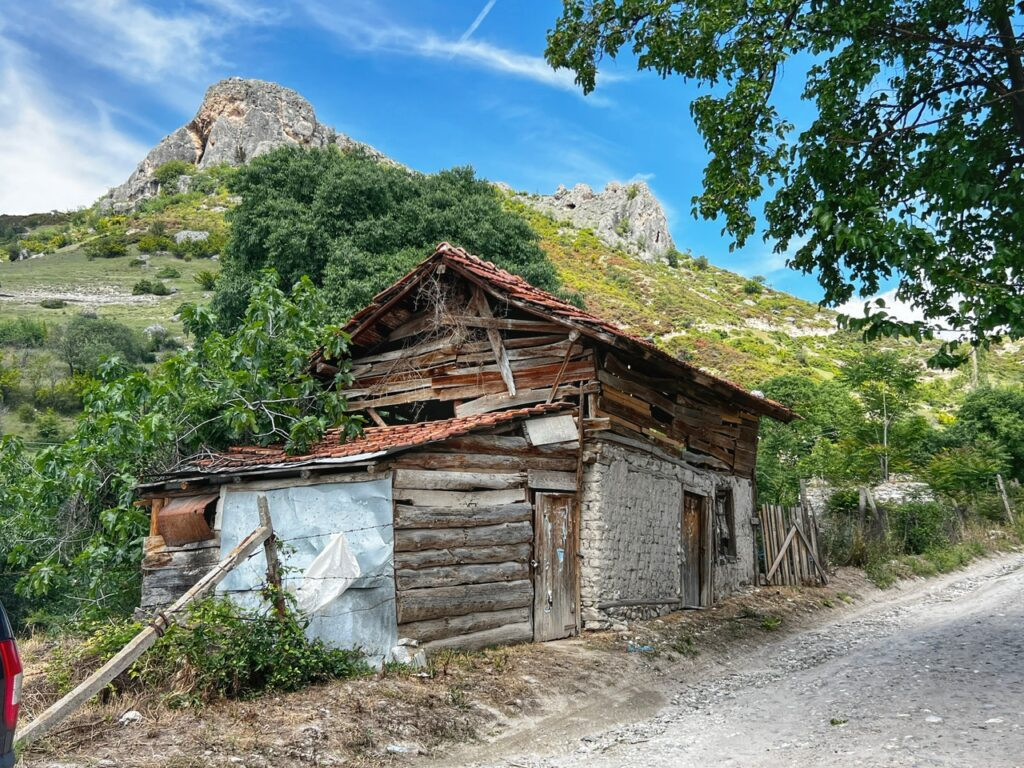
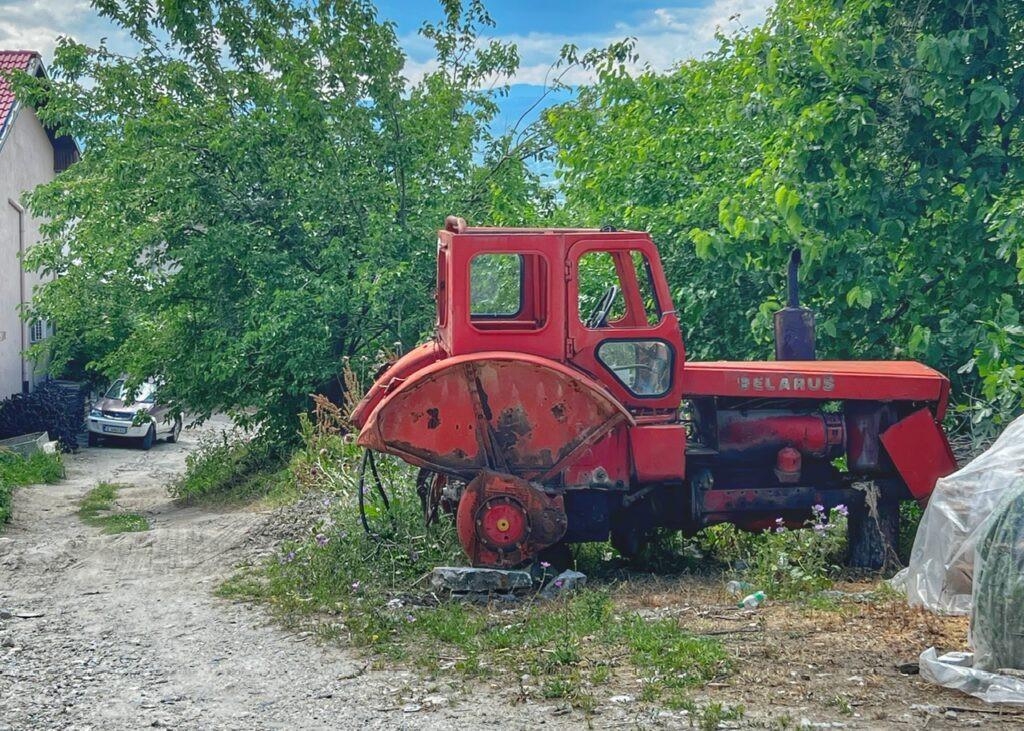
The mountain, the tree and the crumbling roof…all in perfect alignment. Also, a vintage tractor stating “Belarus” as its name.
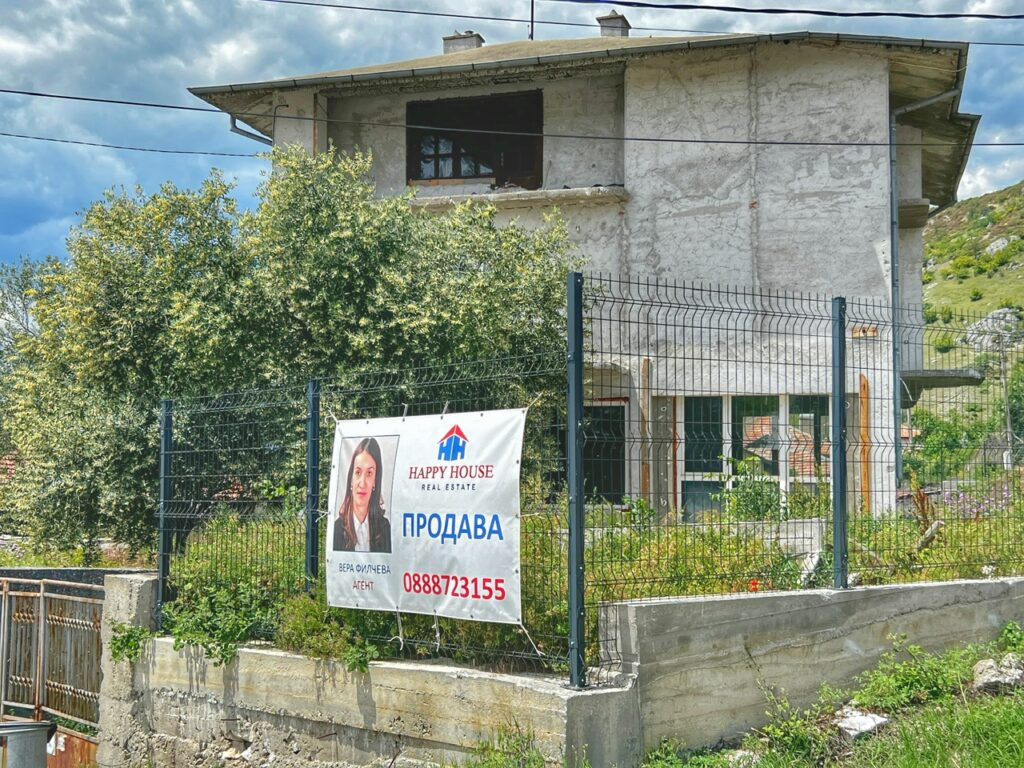
And as usual, we saw a couple houses for sale…and a real estate agent working the neighborhood. They’re trying…
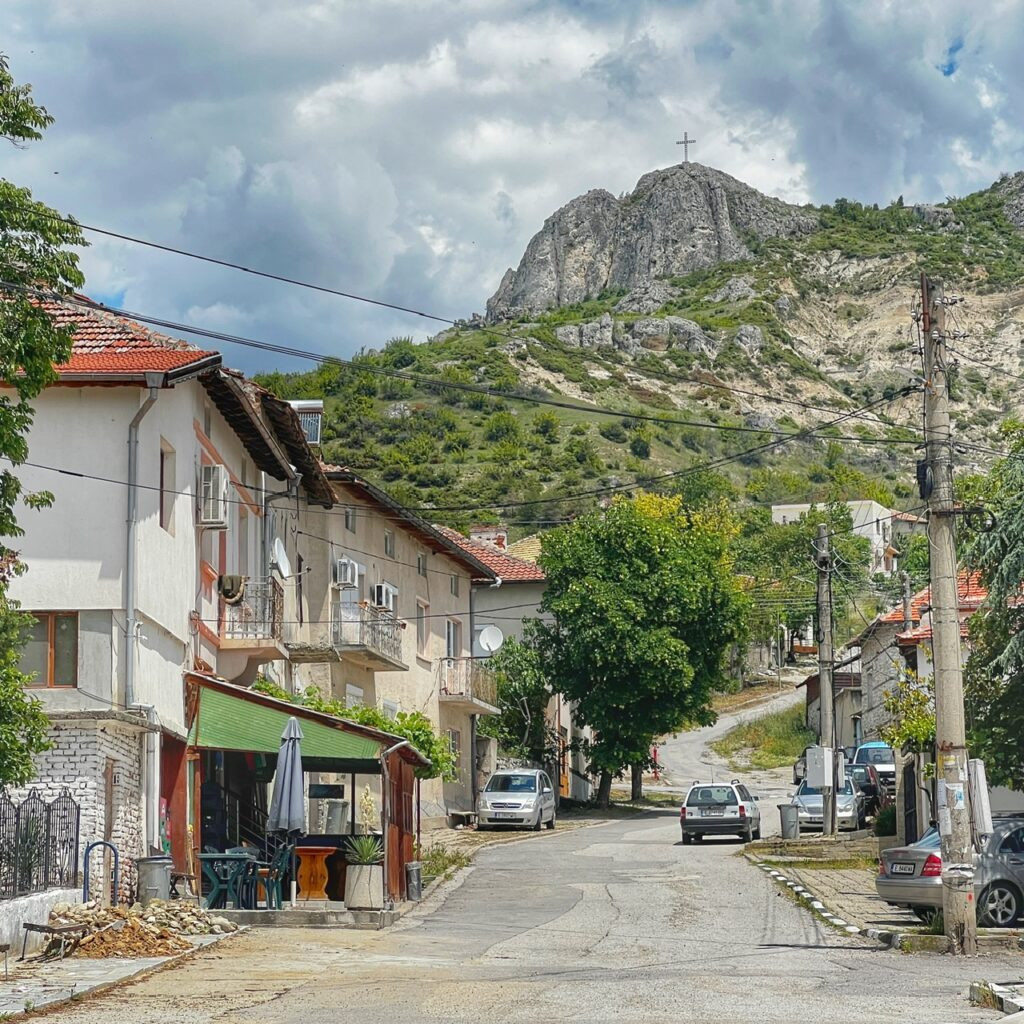

The main street of Illidentsi…up top, a cross crowns the mountain. As of this point, we’d not seen many of these in Bulgaria, which made us feel like we were in Latin America.
The main square. Although there were four markets, several restaurants, a hotel, and a wine tasting room on Google maps…all seemed mostly shuttered, as if they’d been forgotten in time.
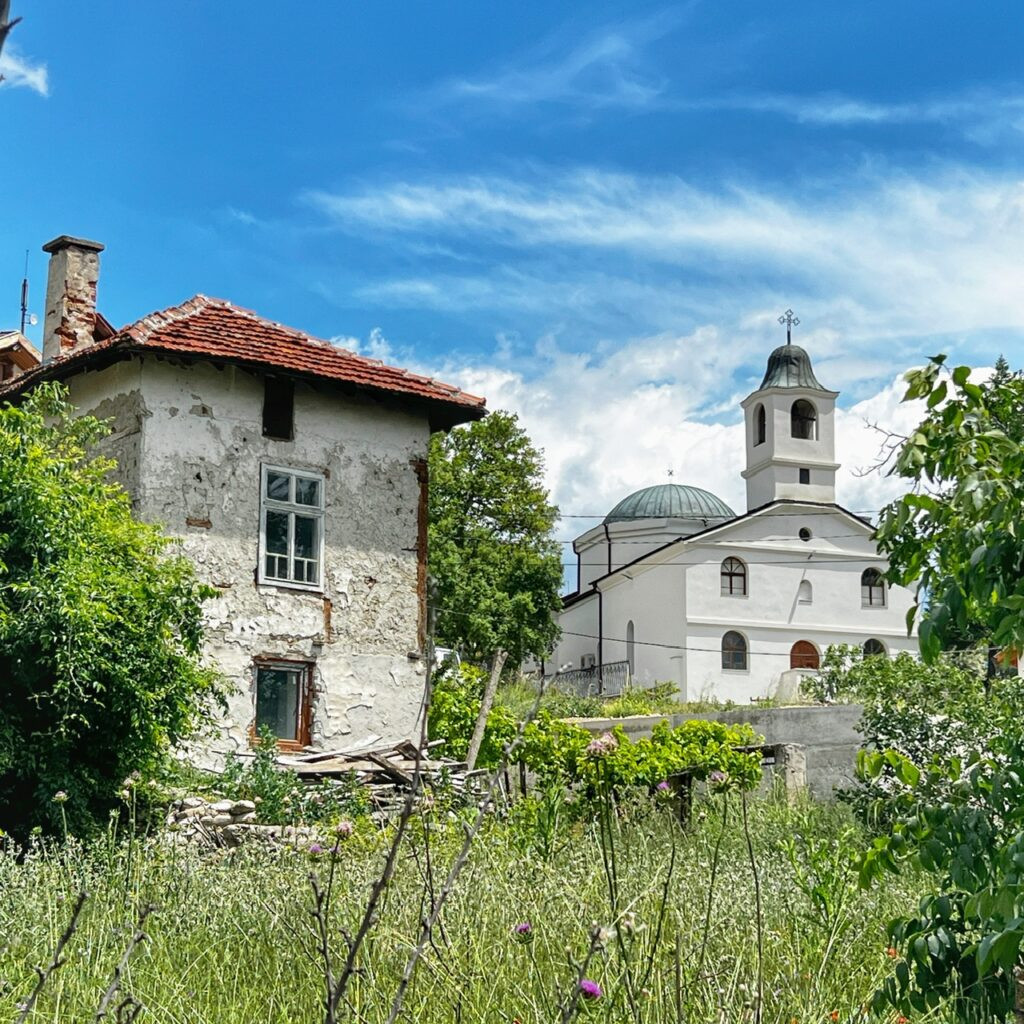

We’re very intrigued by these rolling scenes we continued to encounter.
The bus times to get back to Sandanski from Strumyani, surprisingly still accurate. The round trip for two tickets was $7…a rising price that is probably a bit intimidating for the locals.

